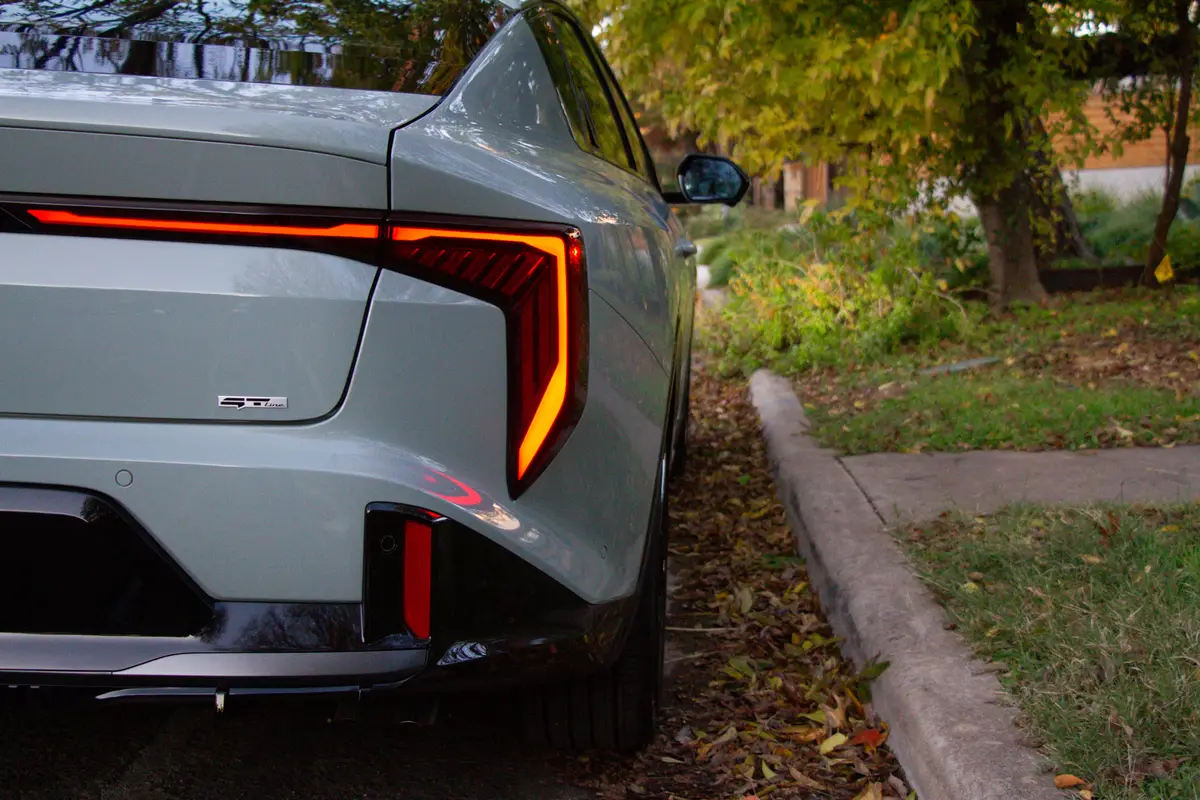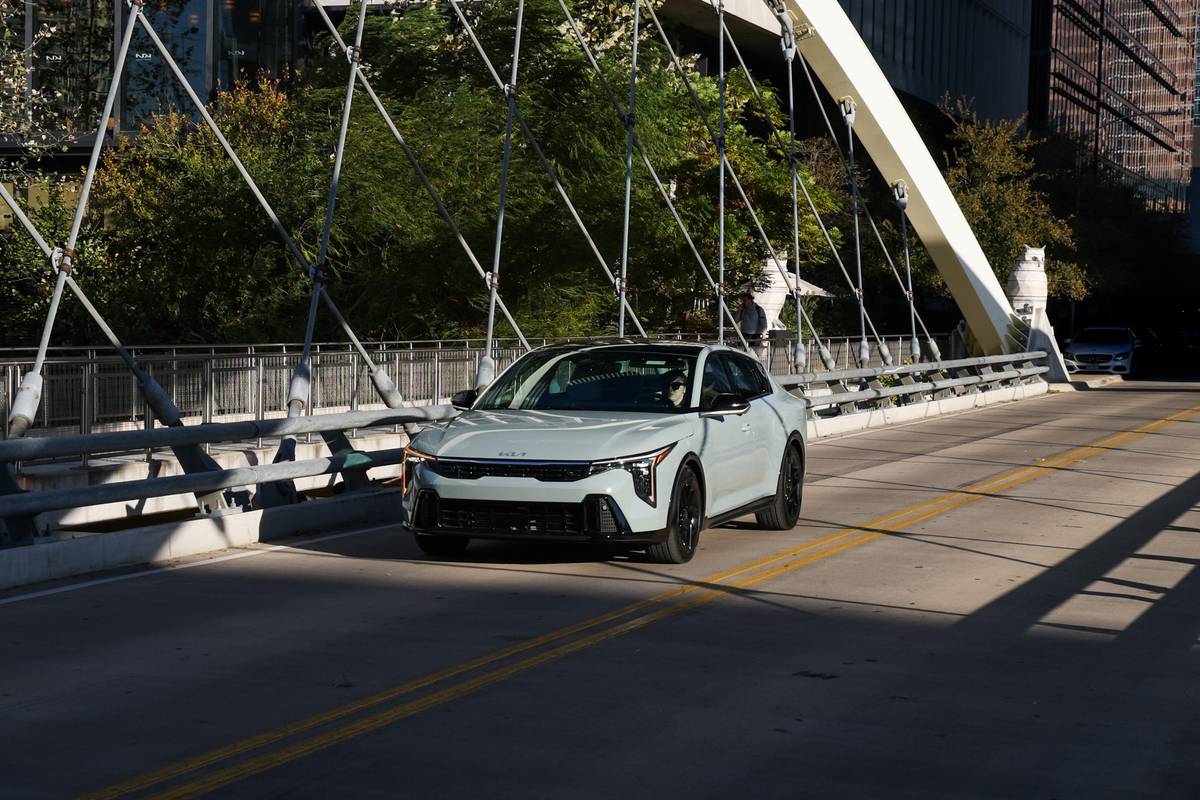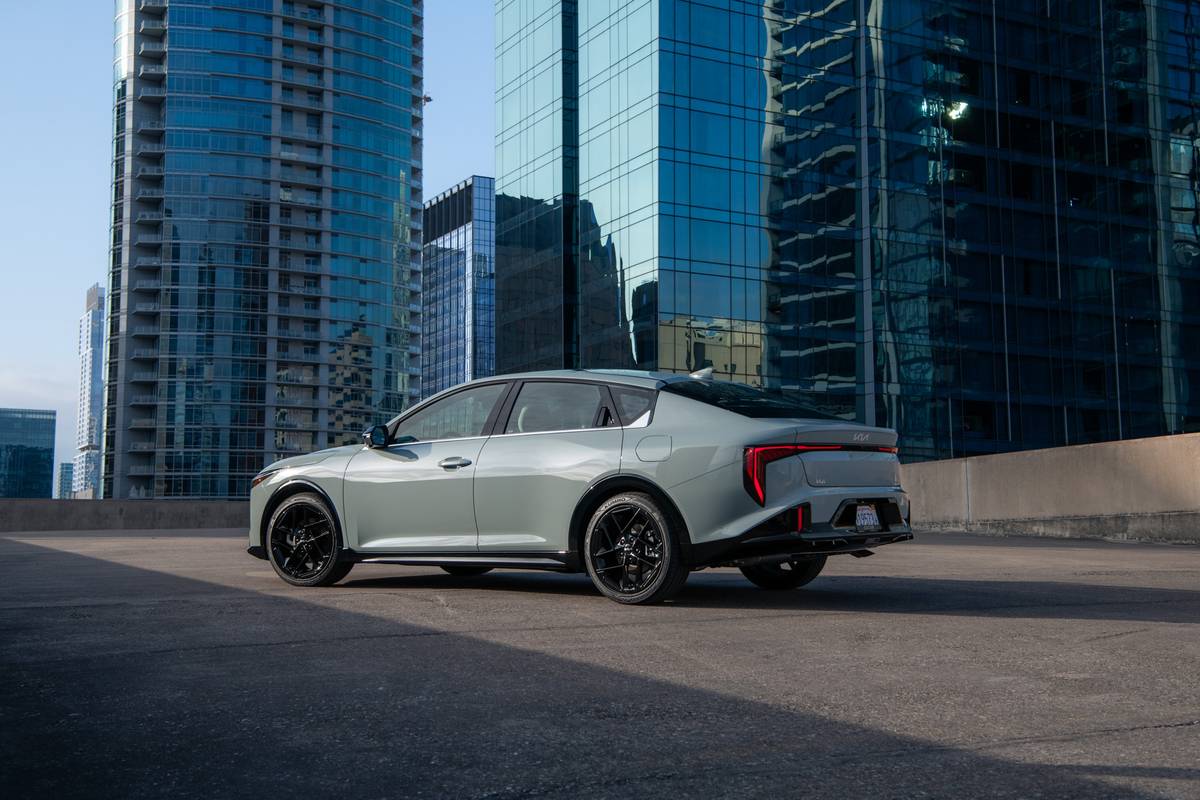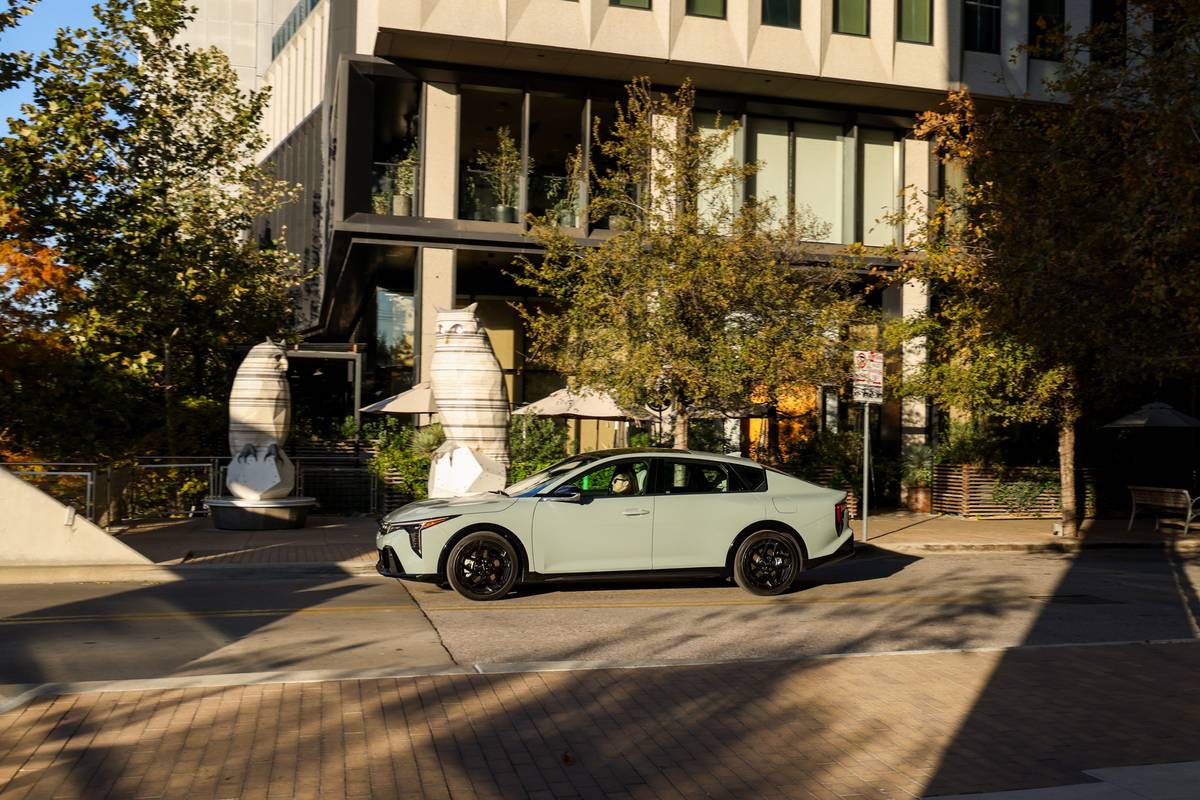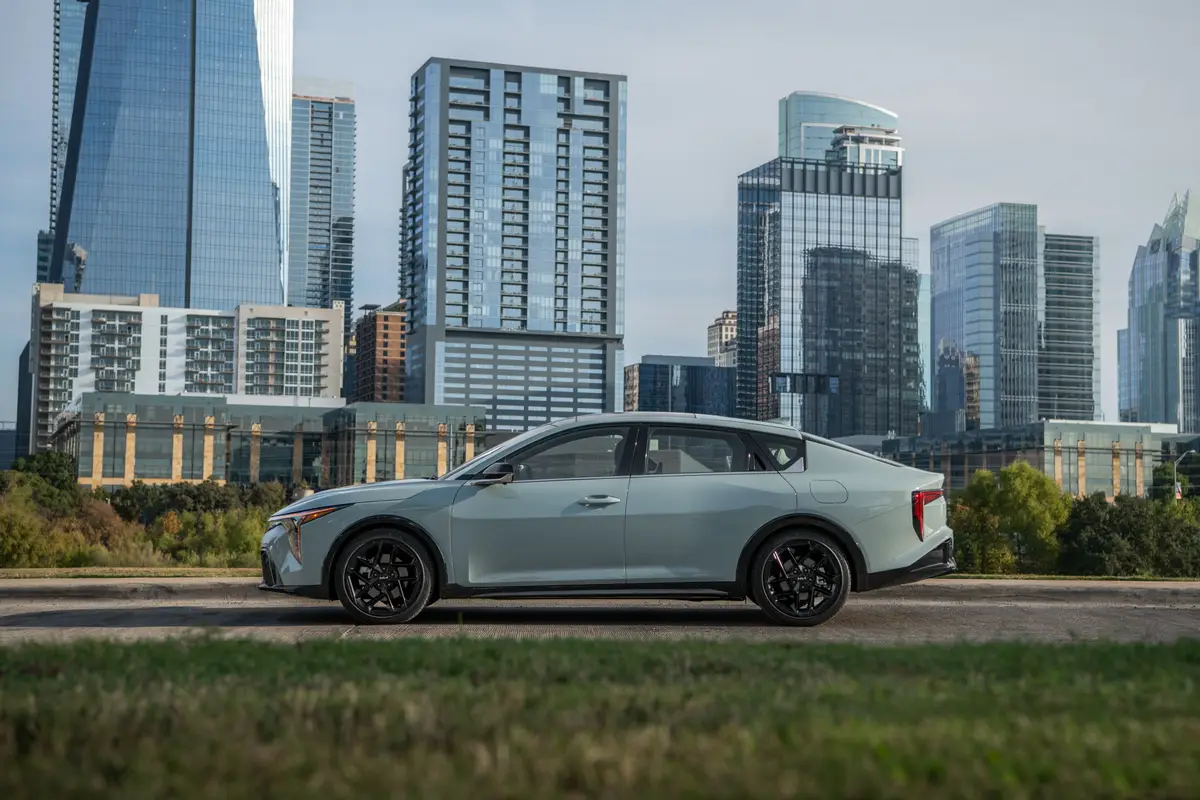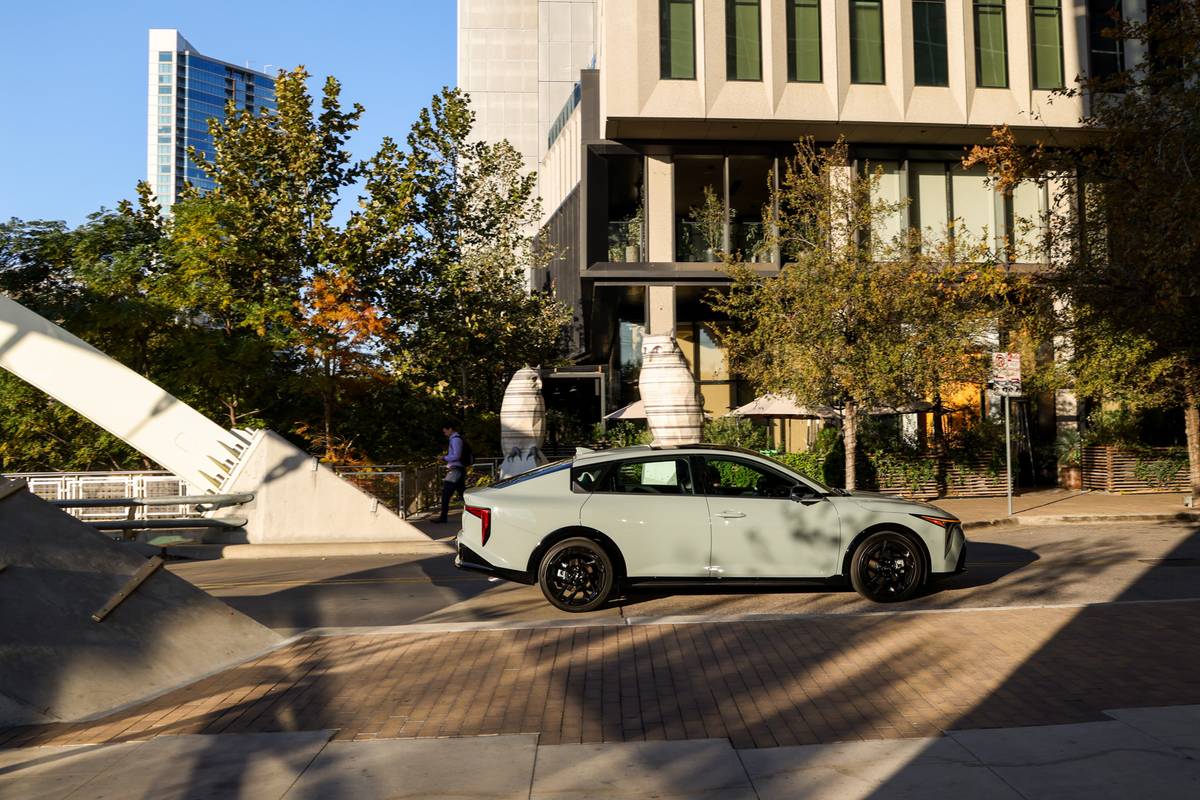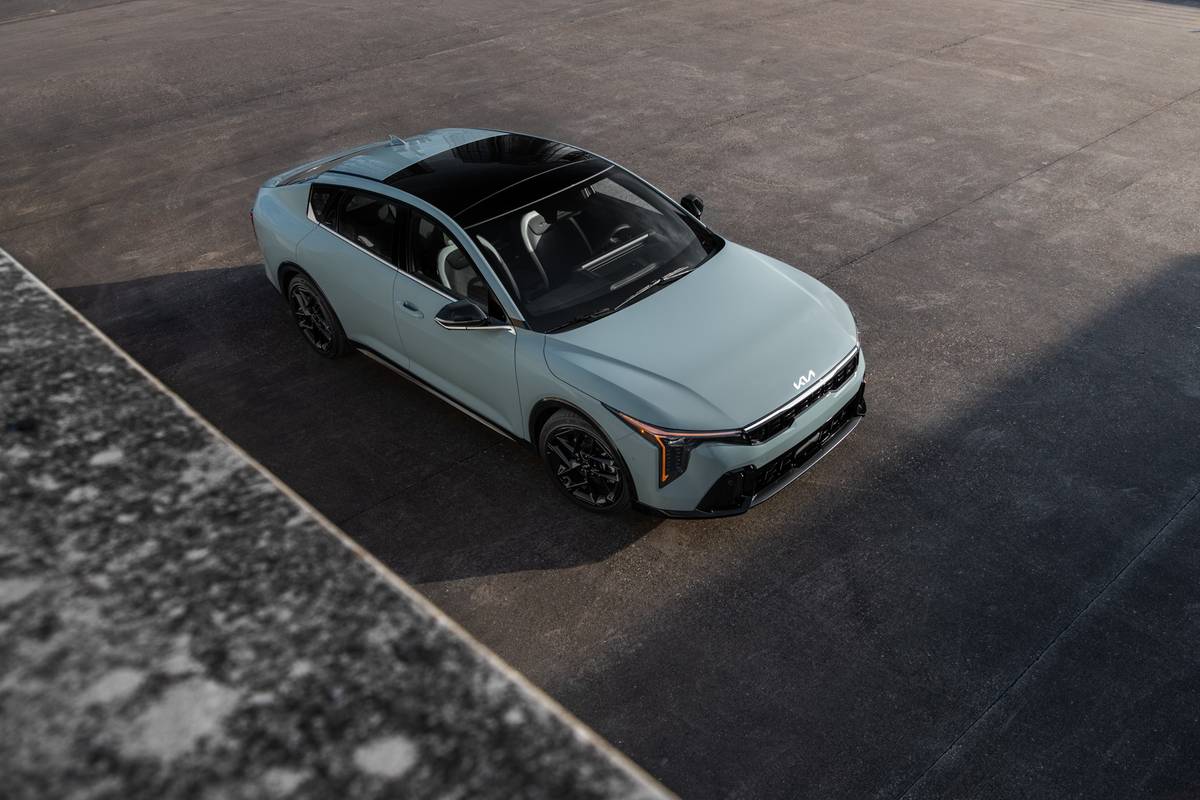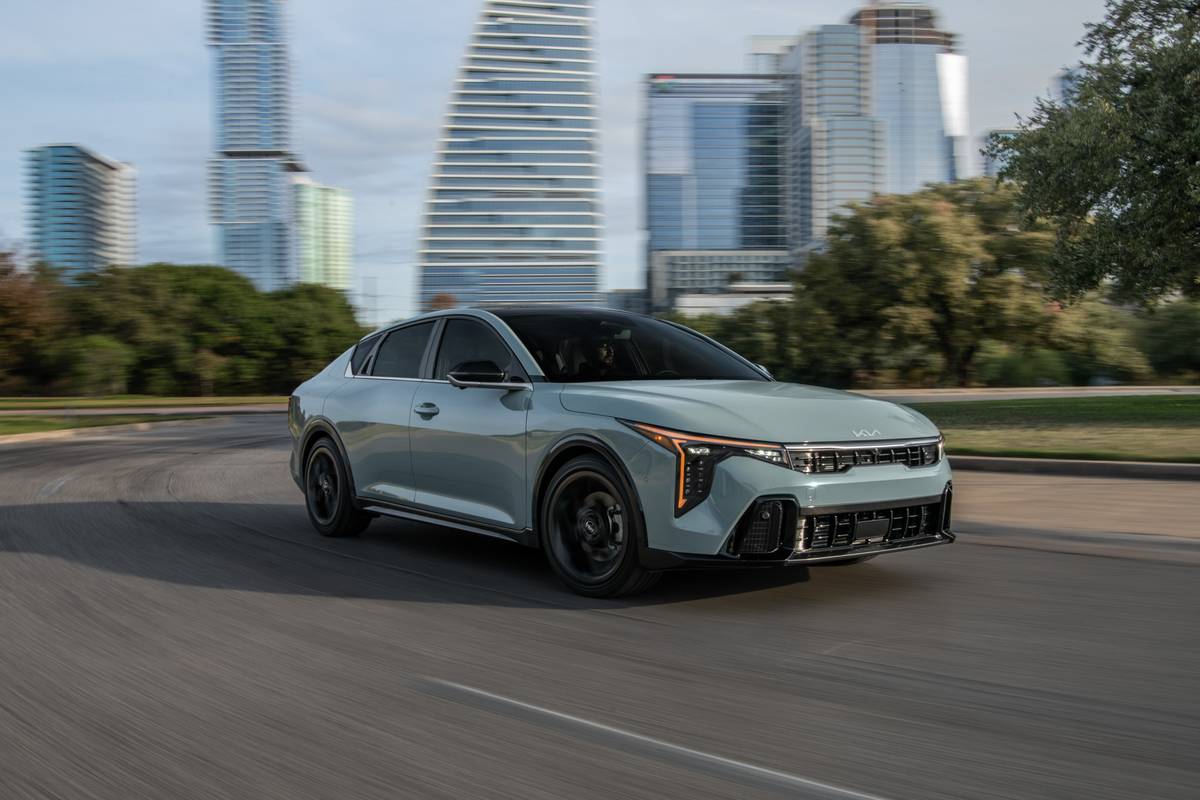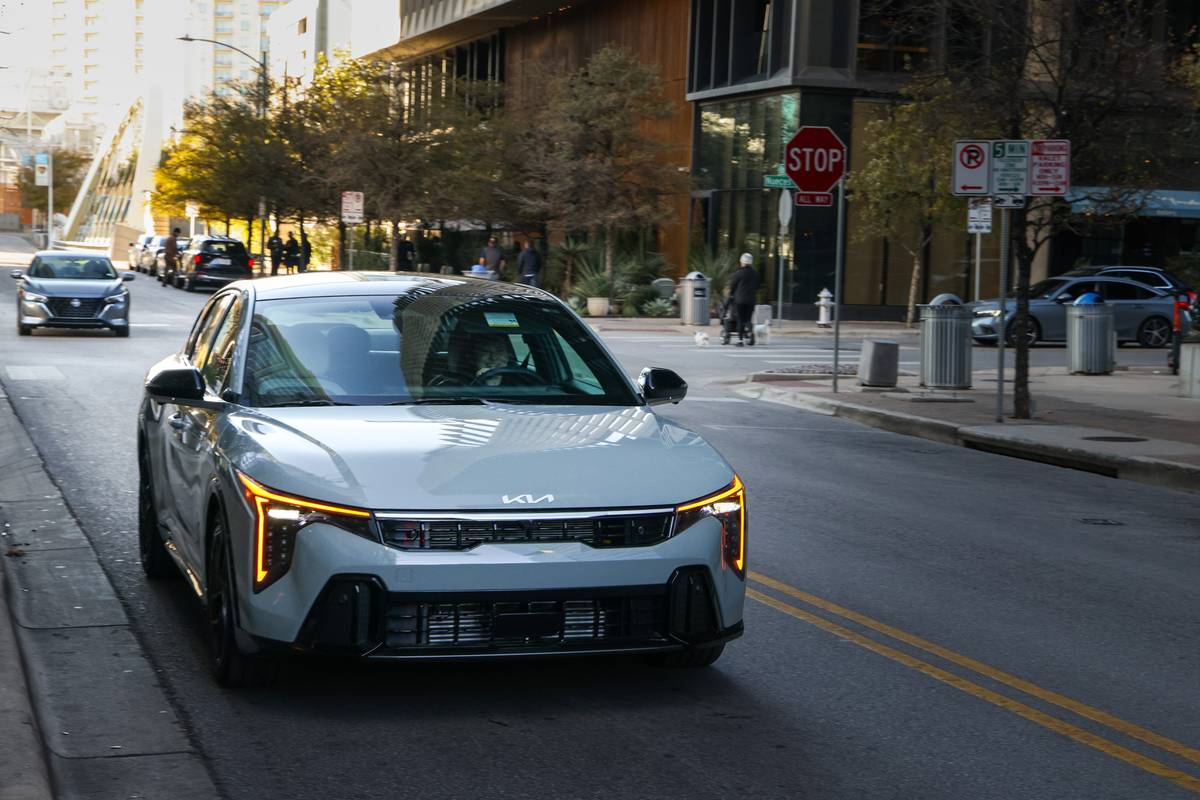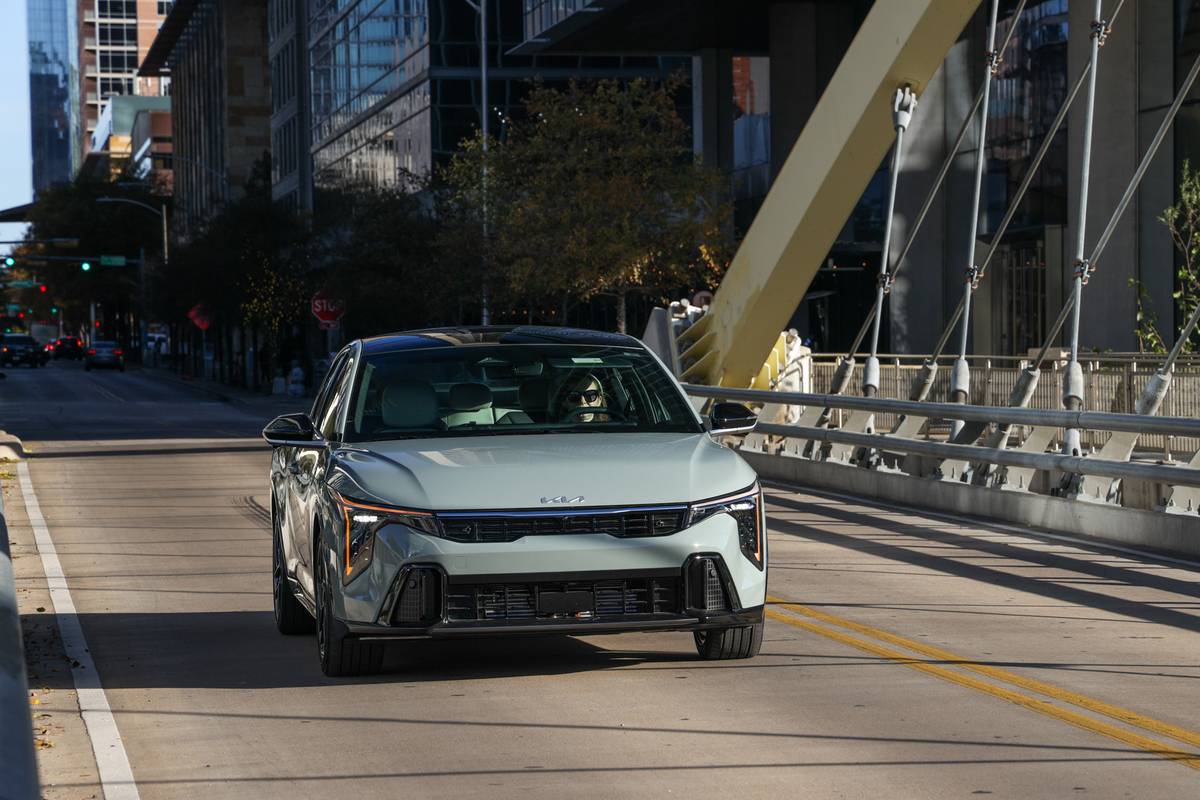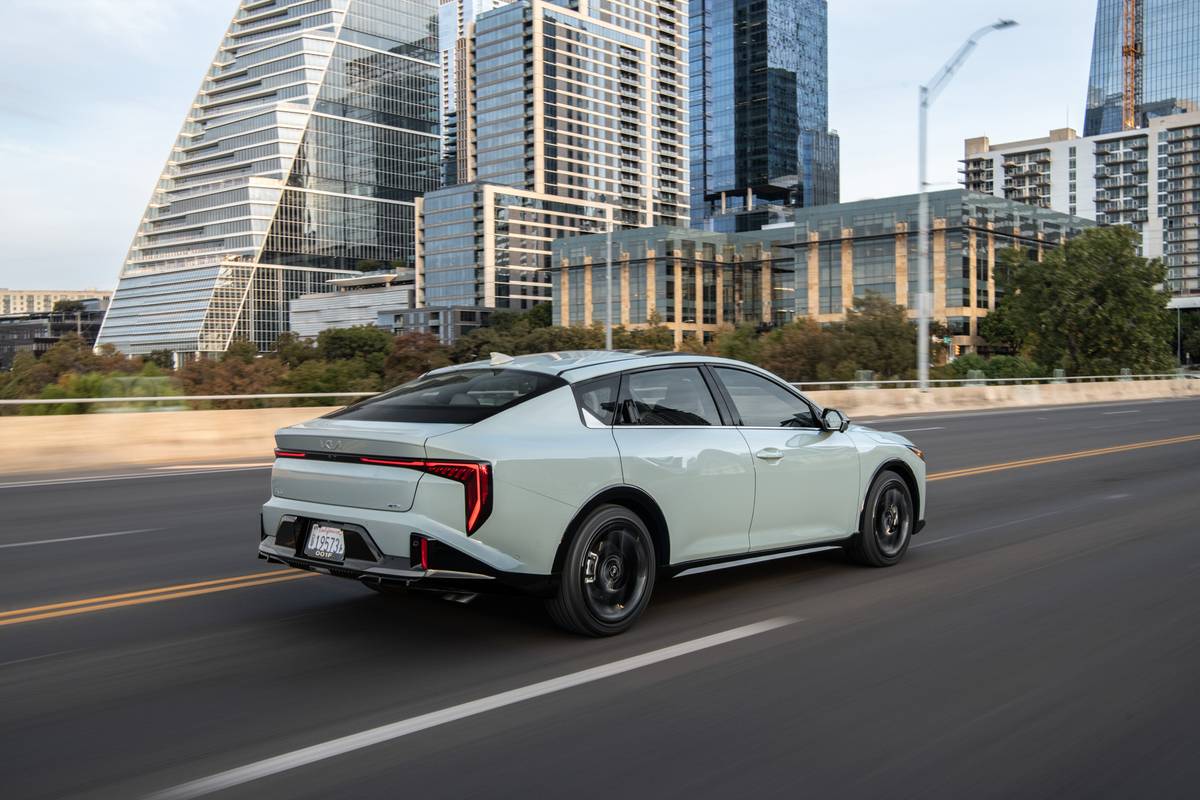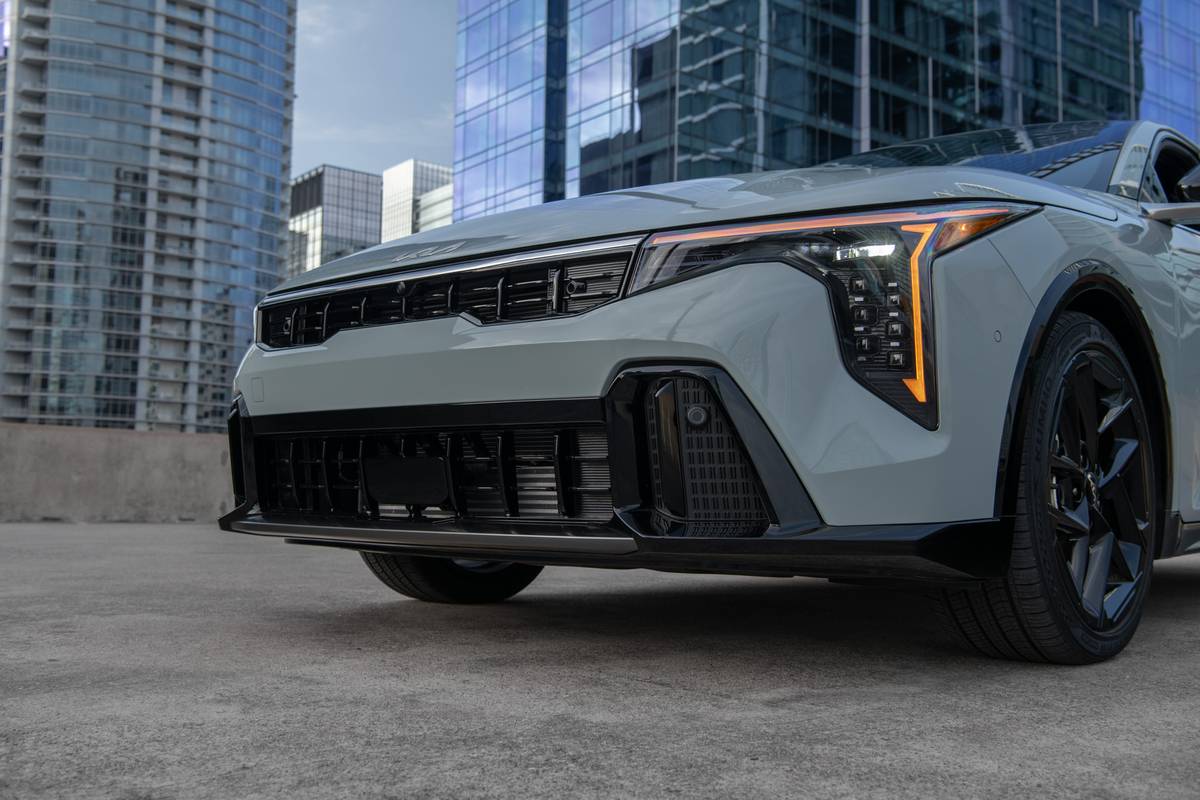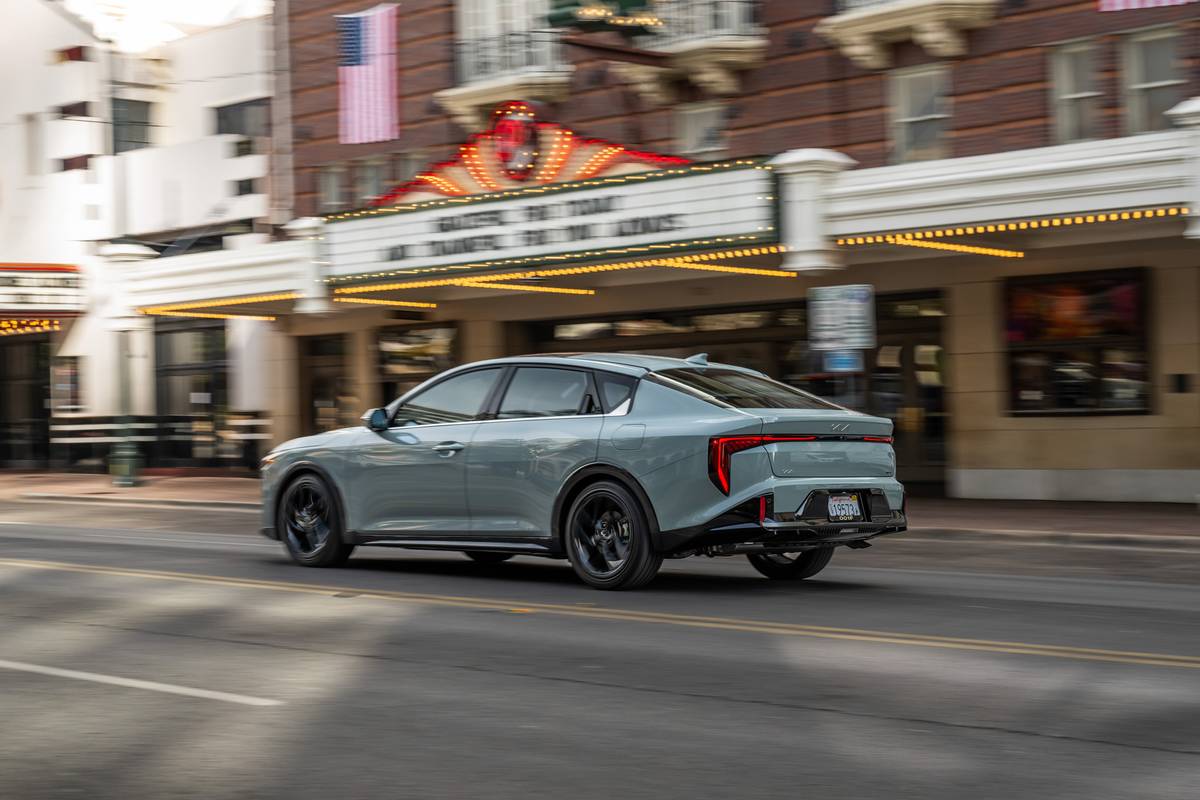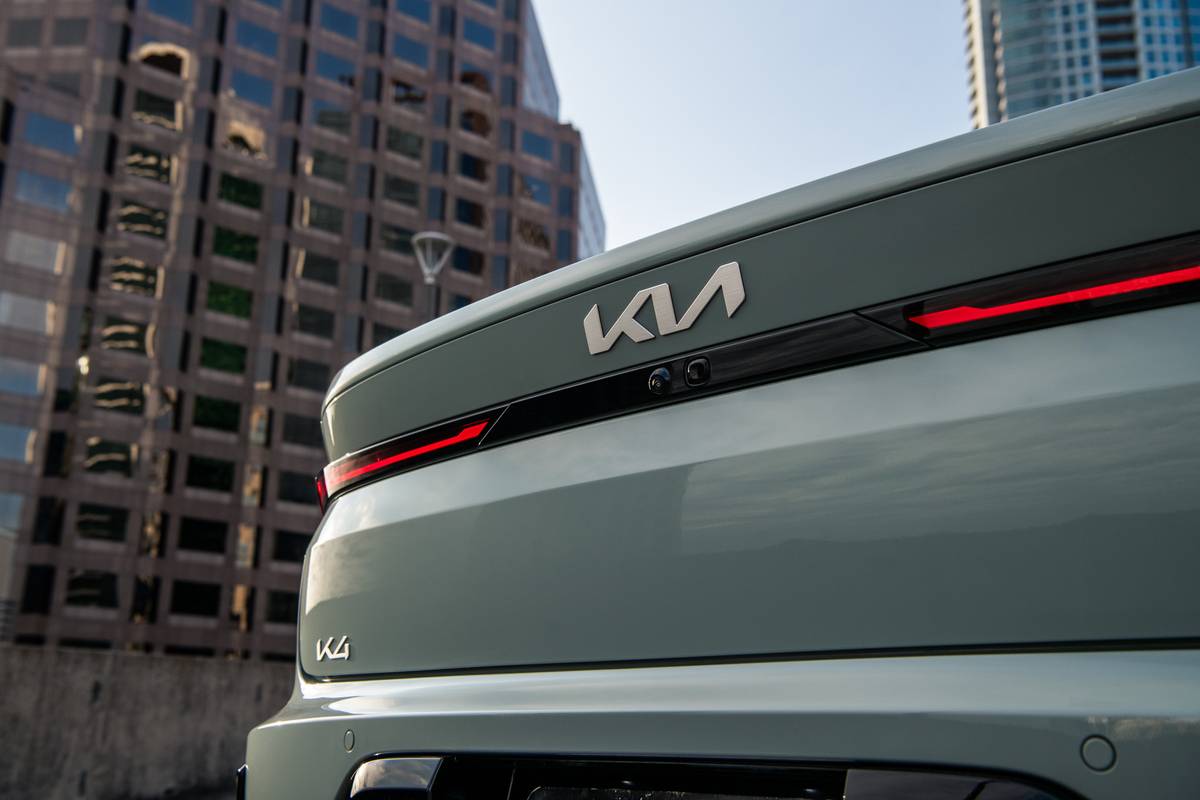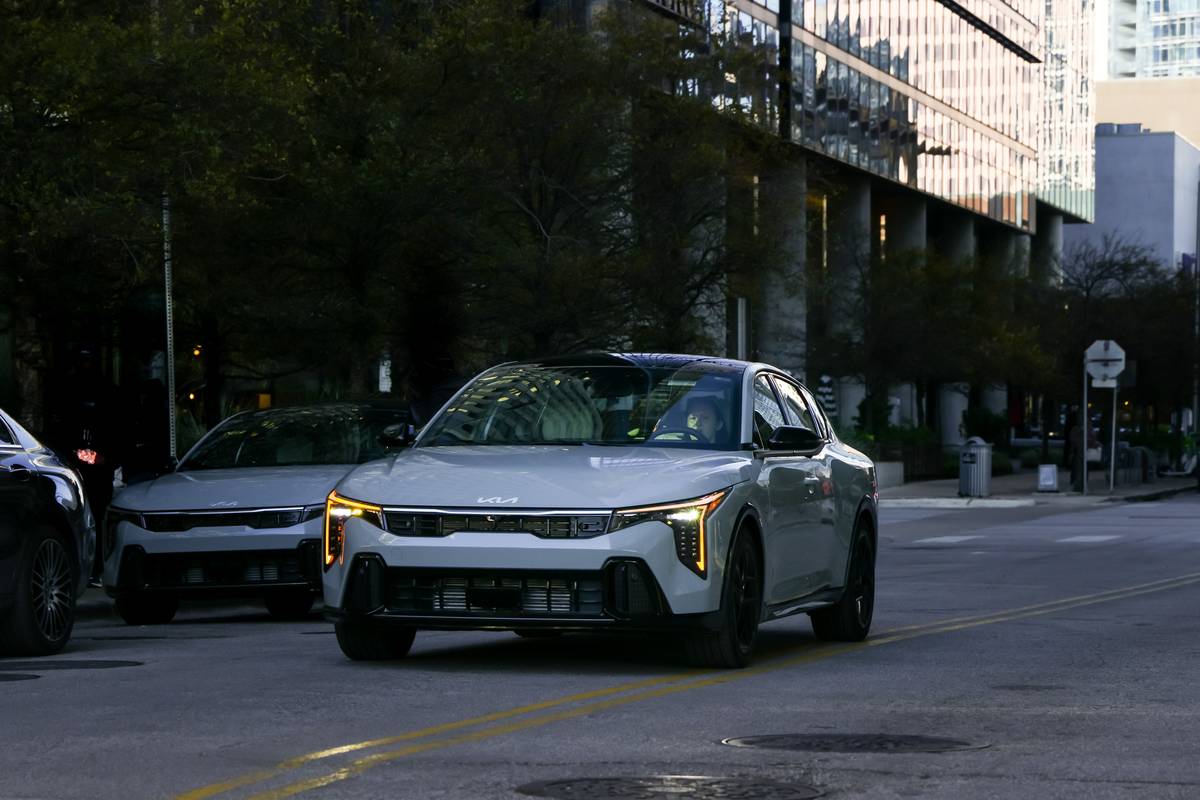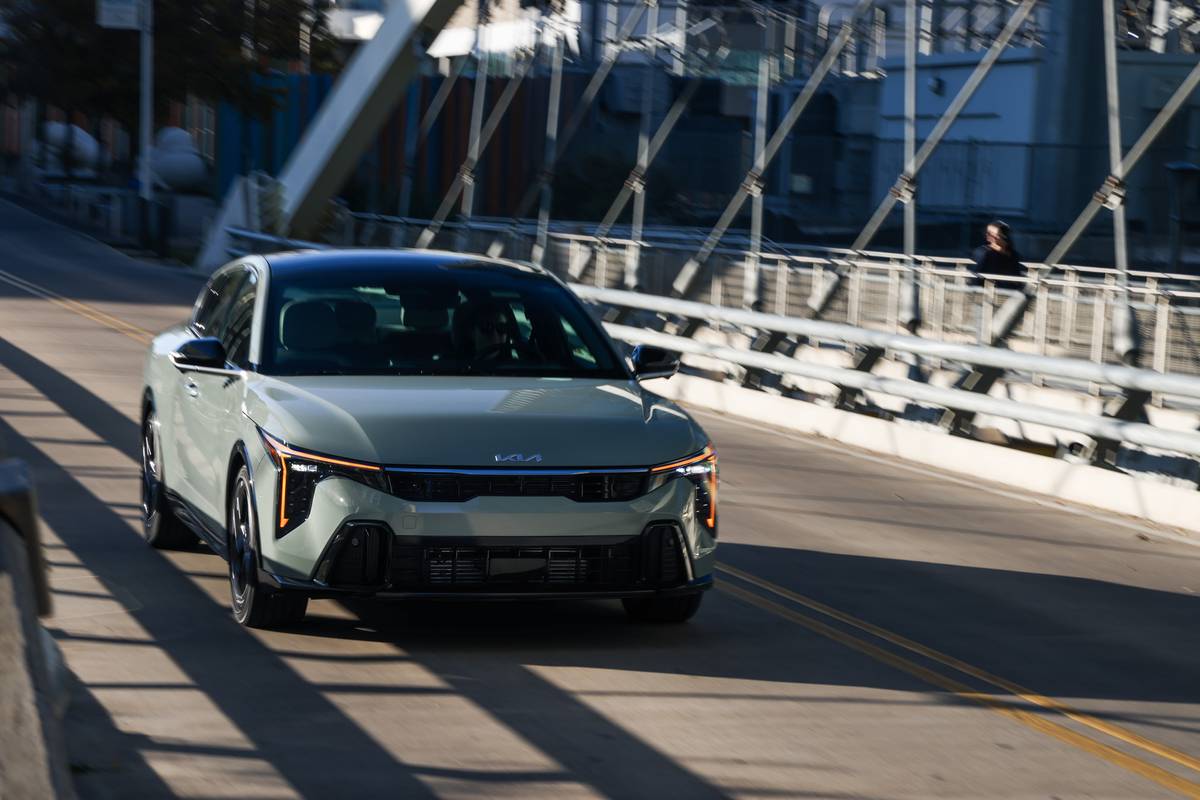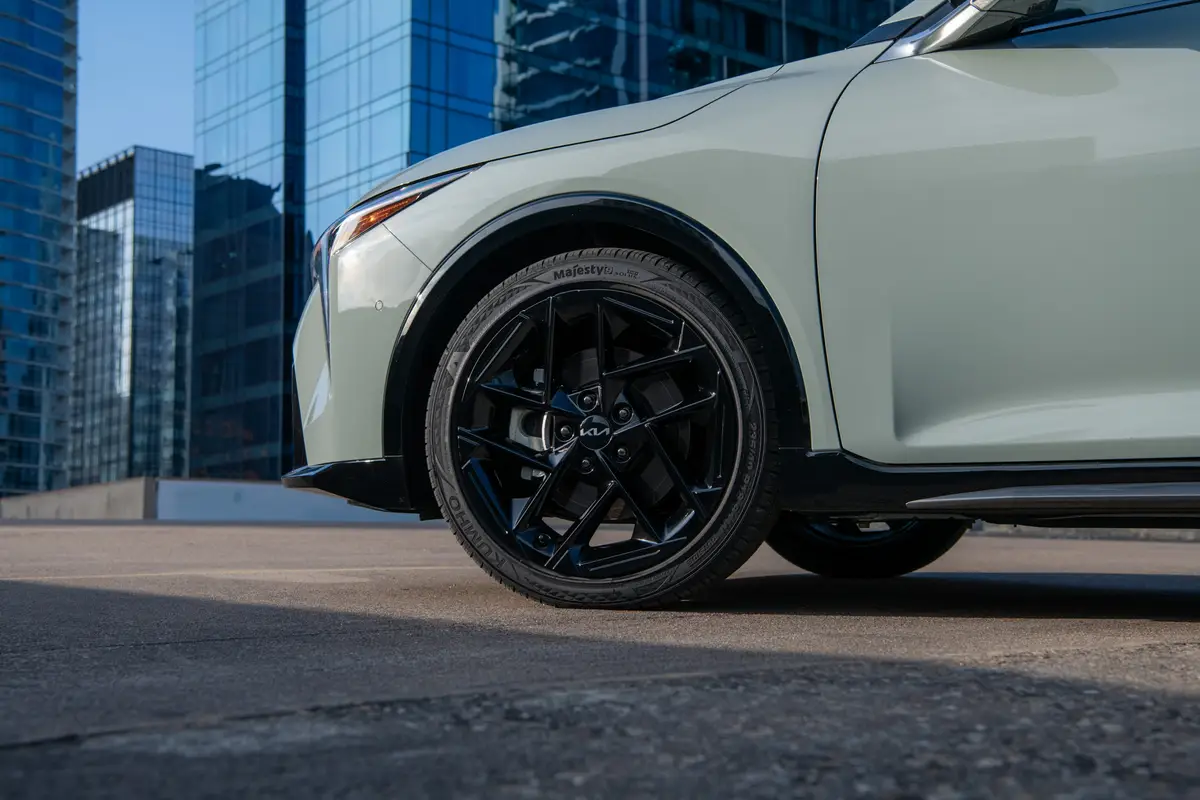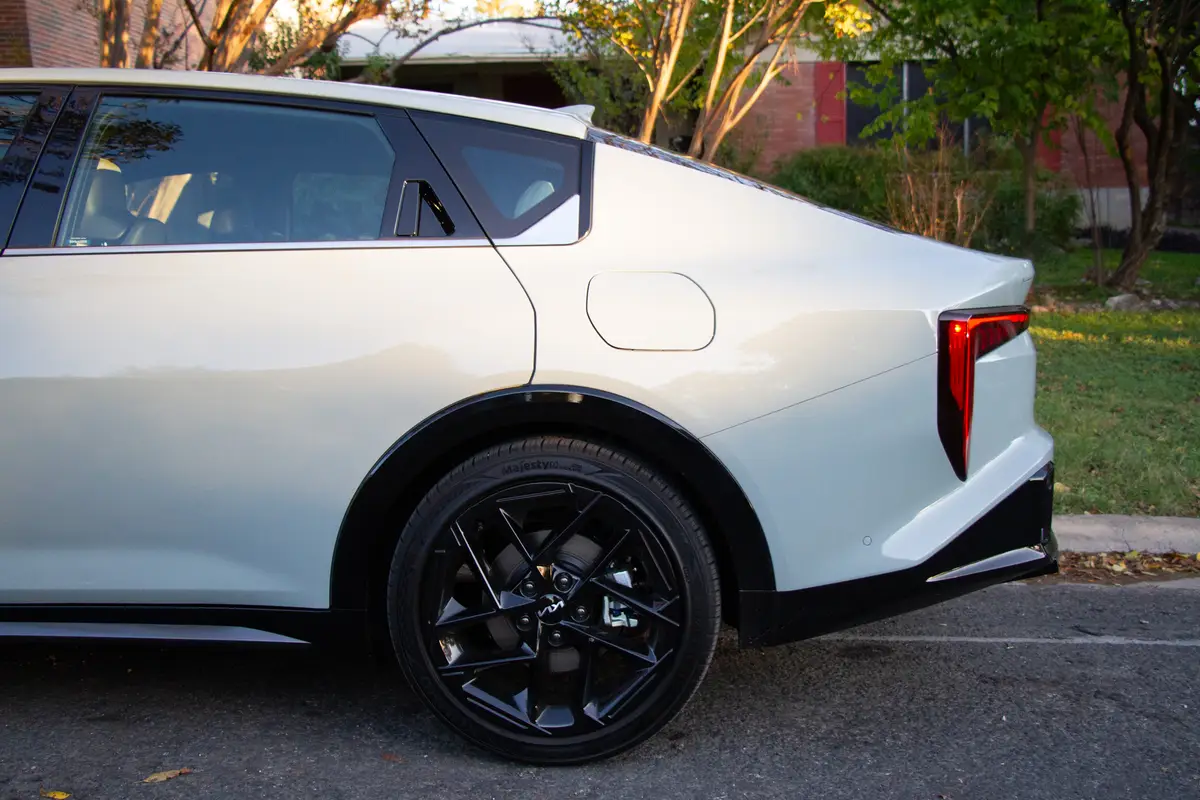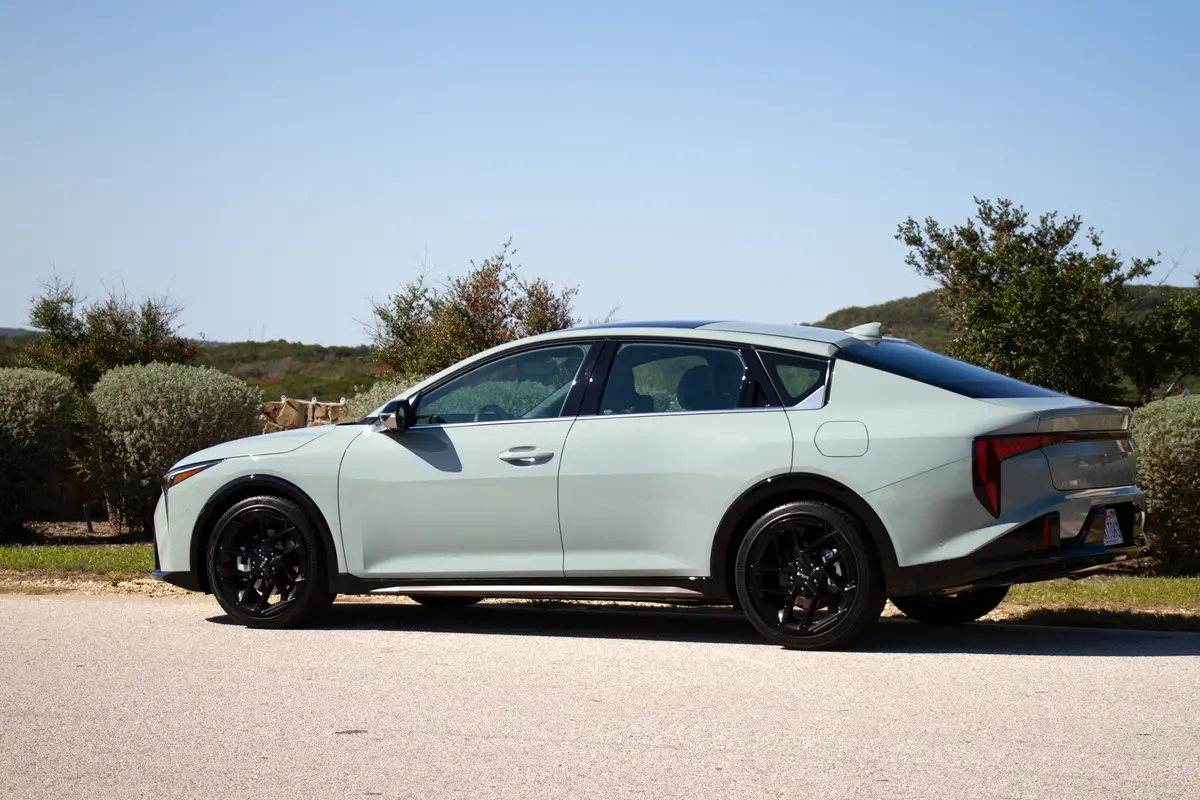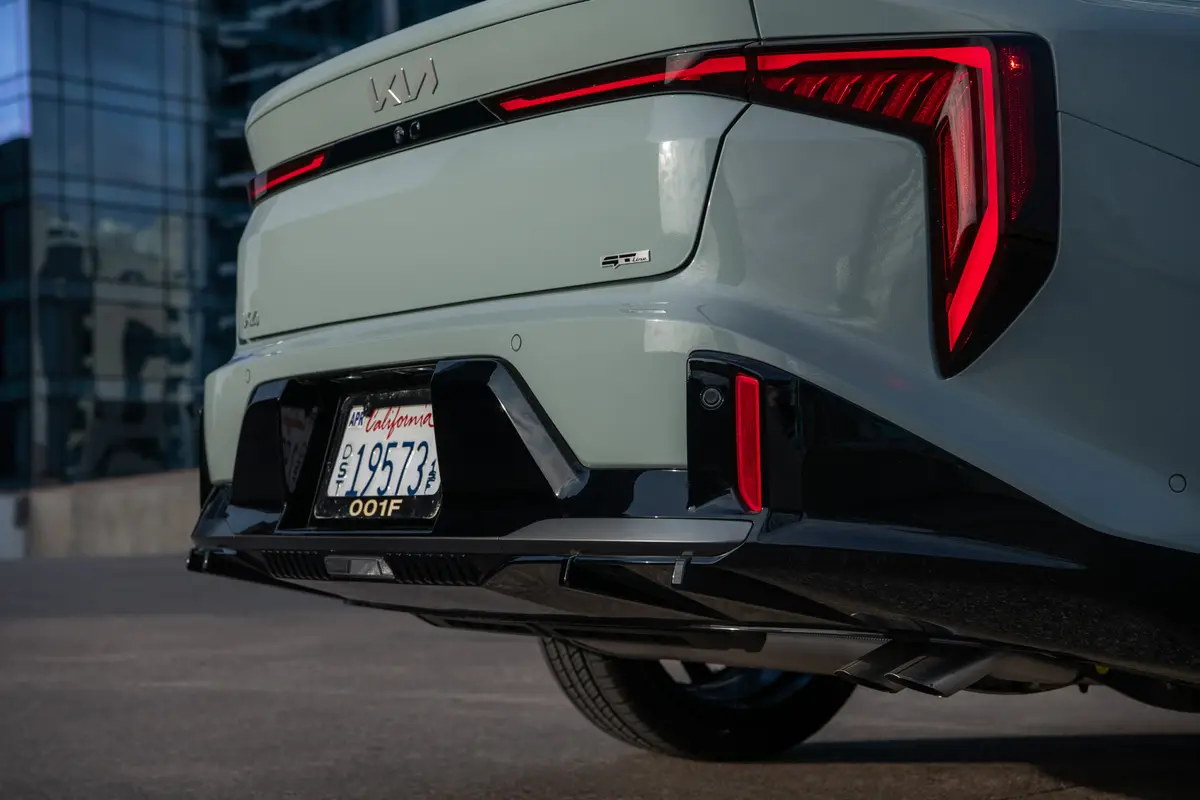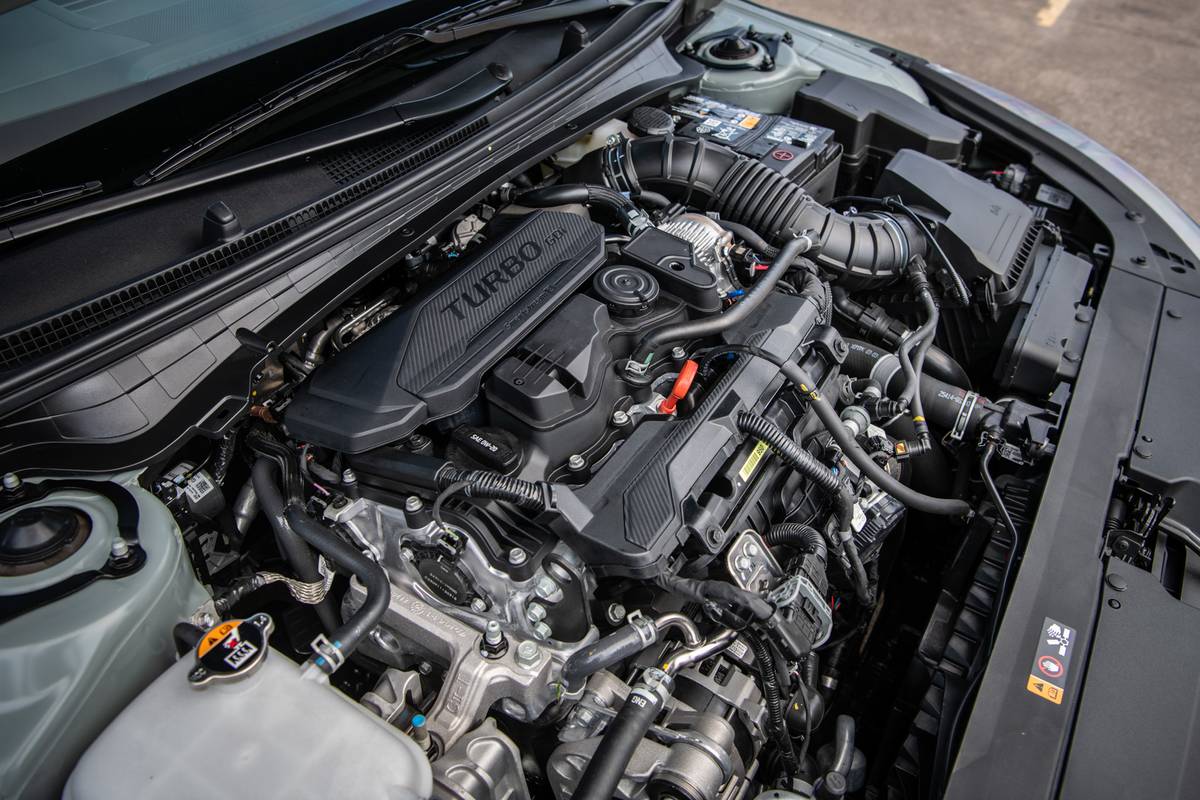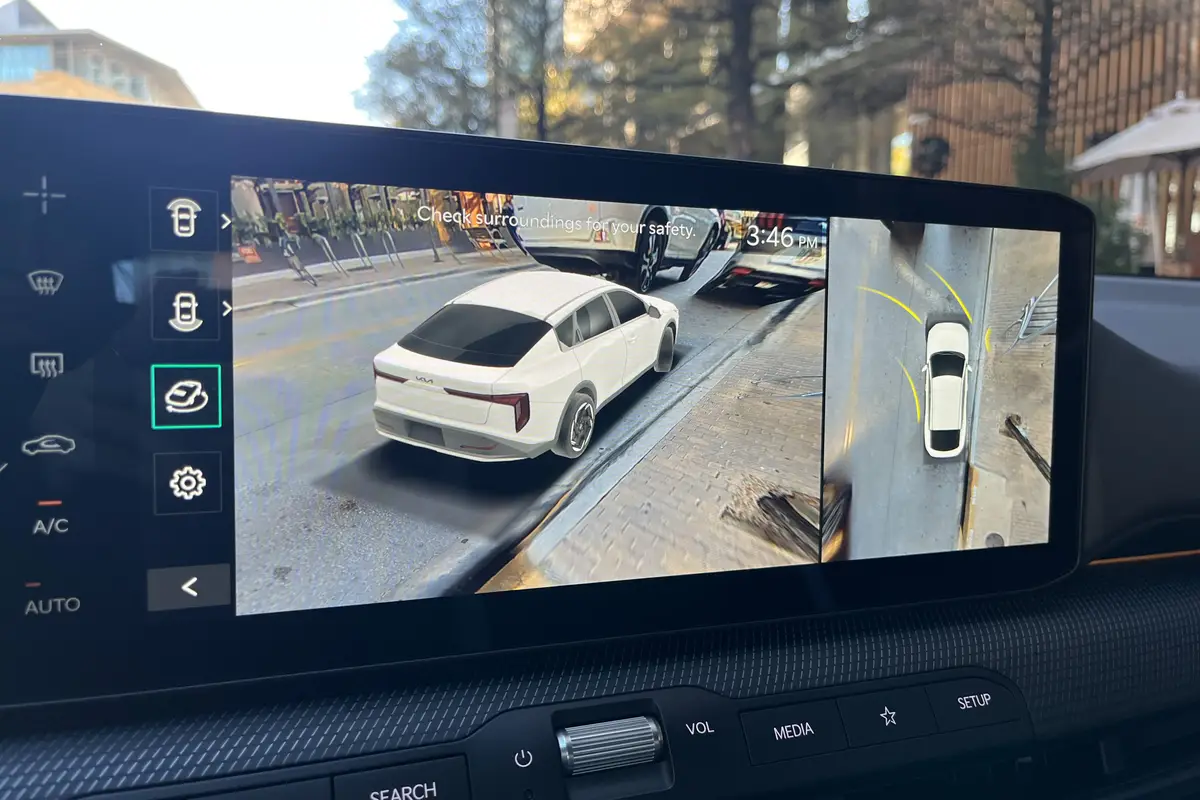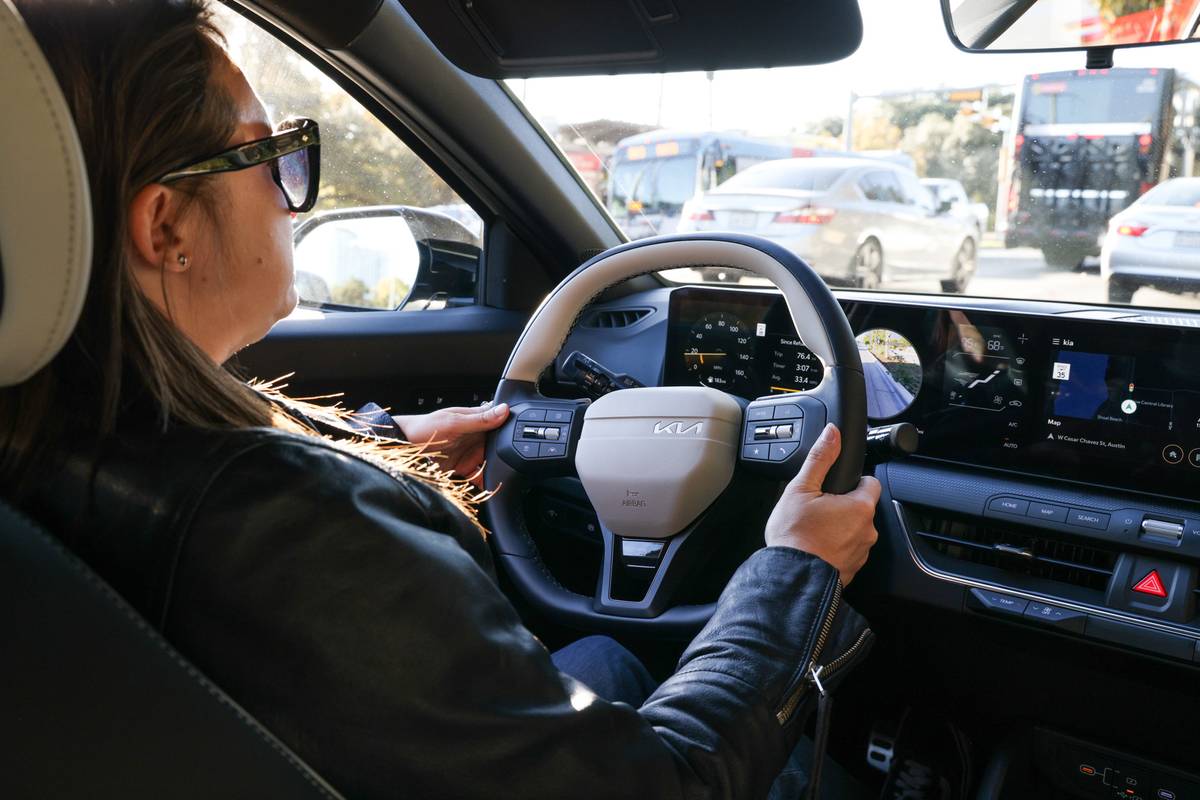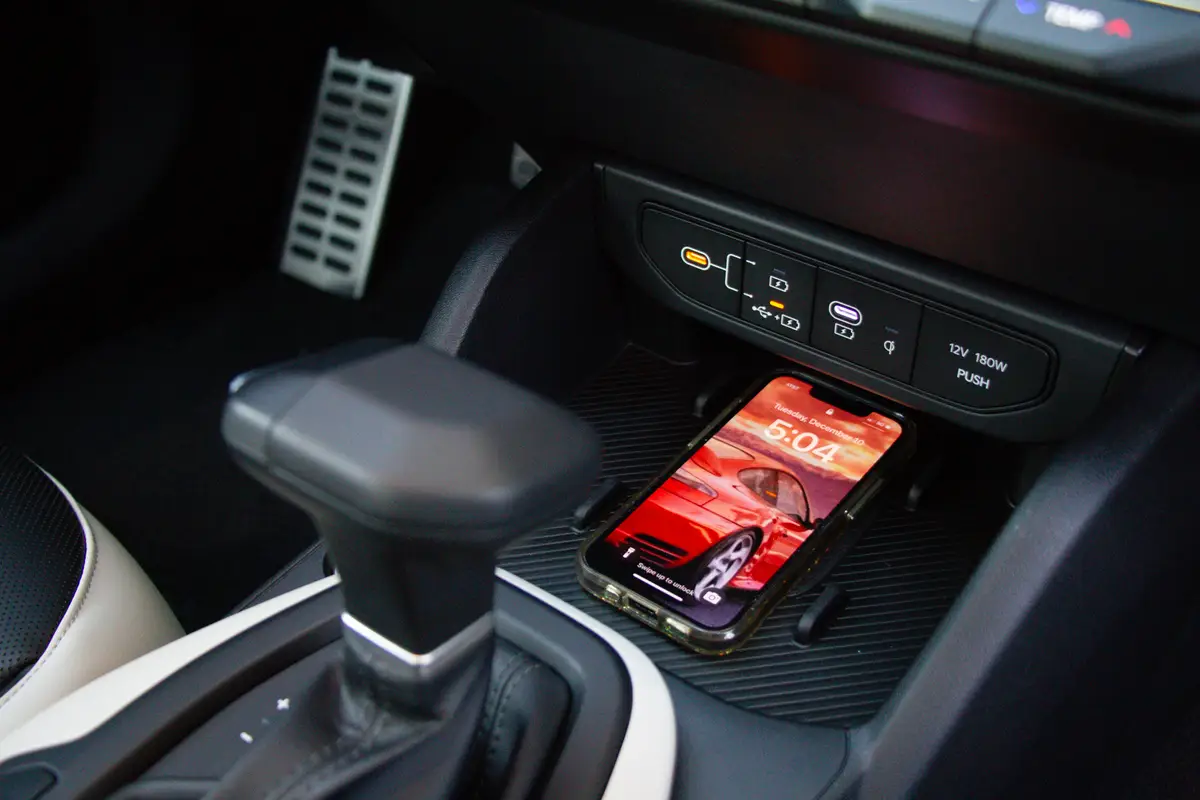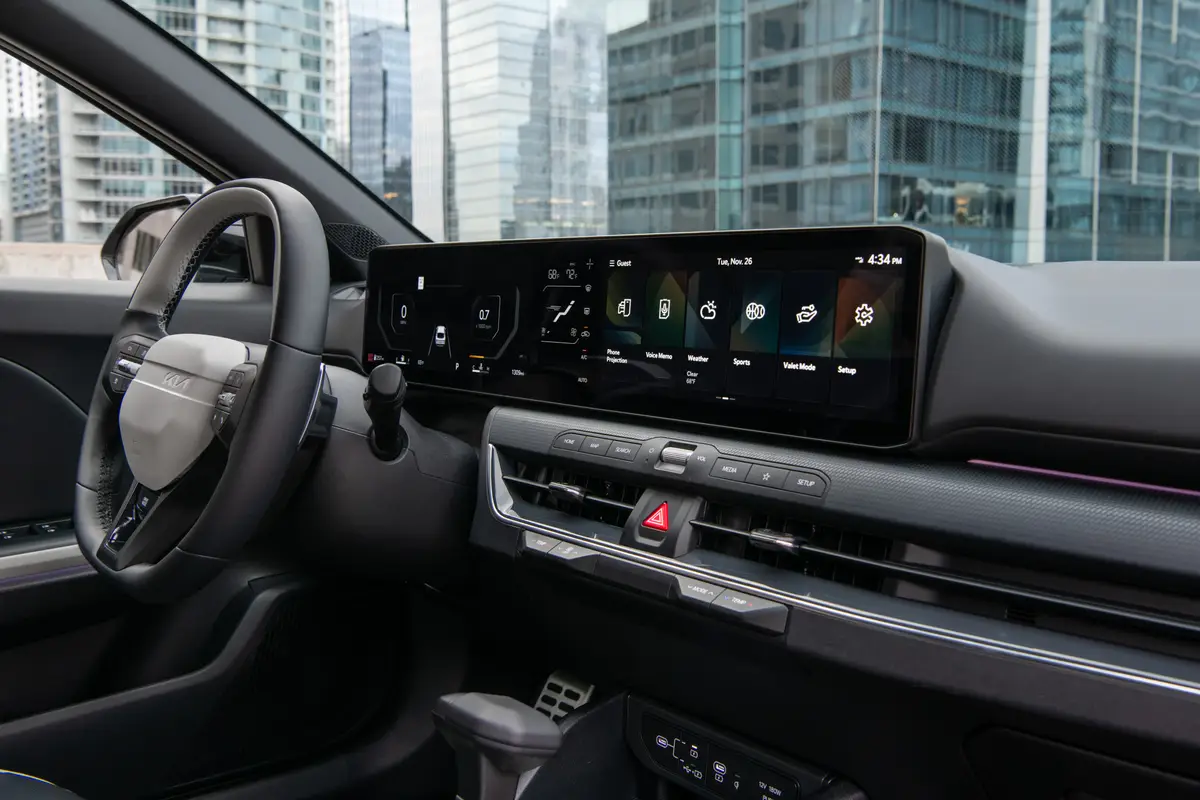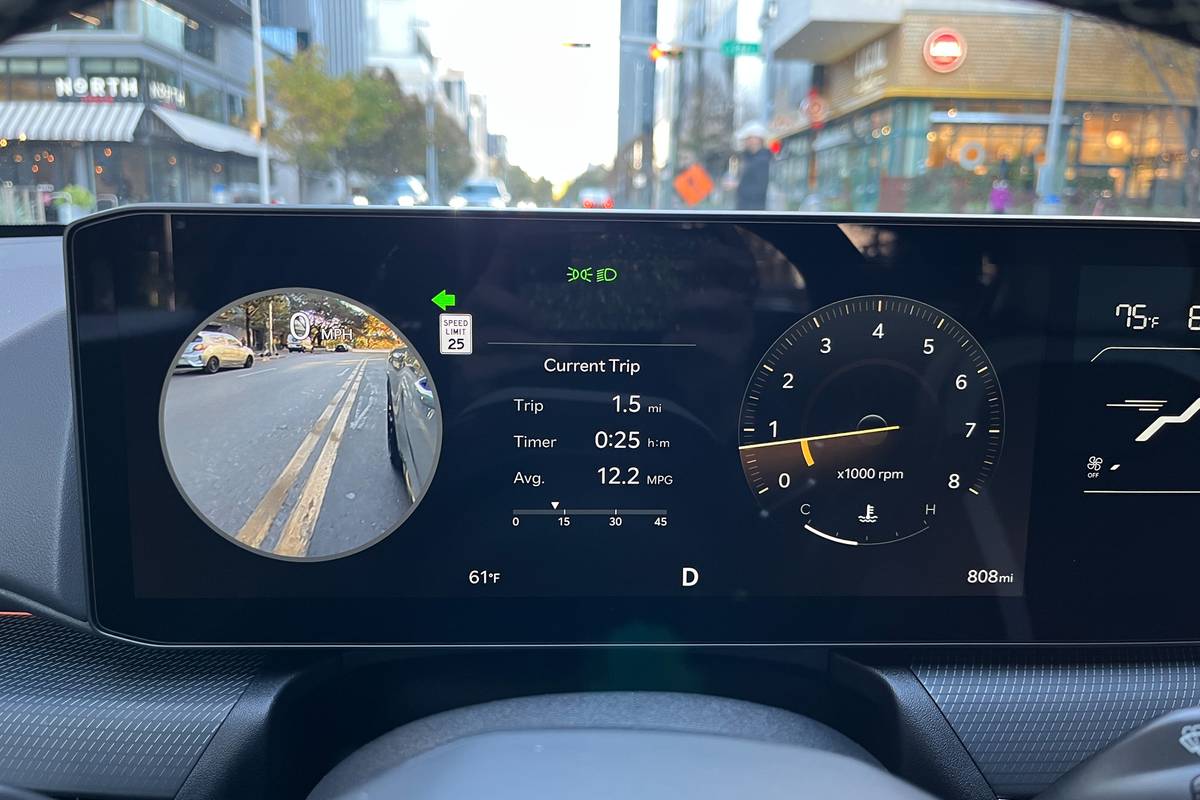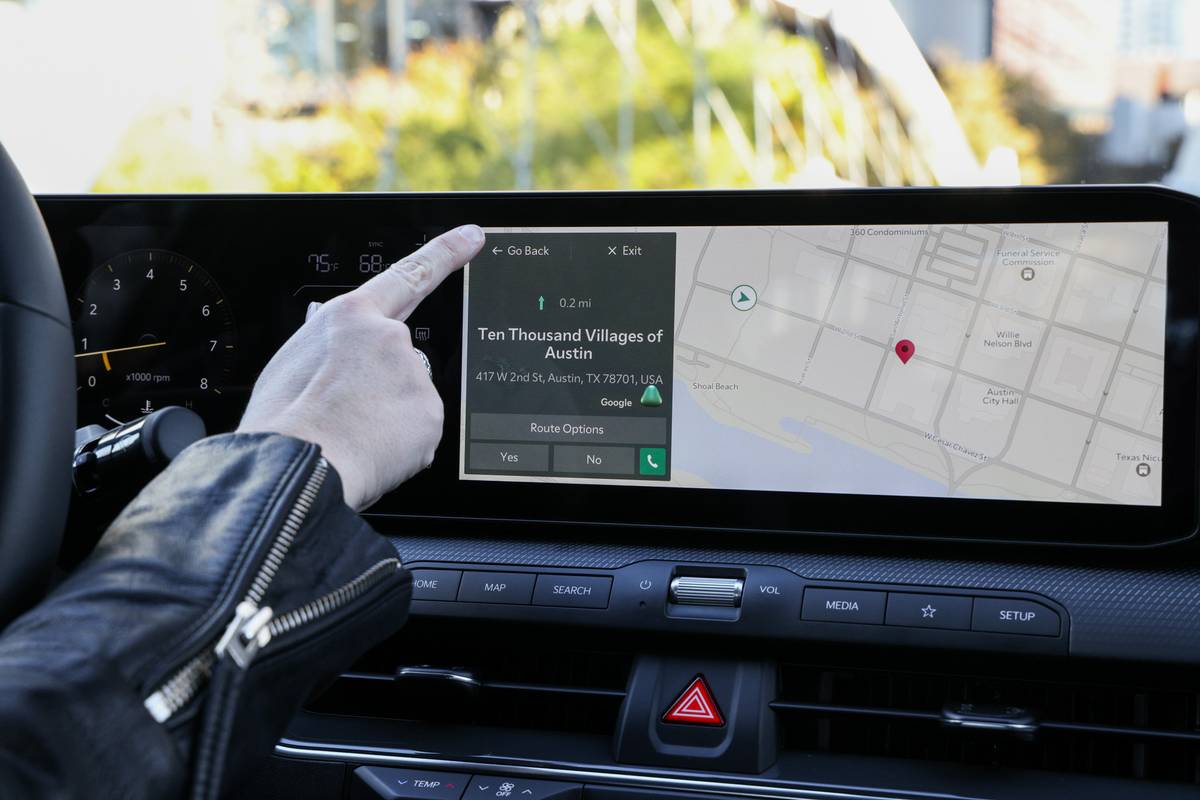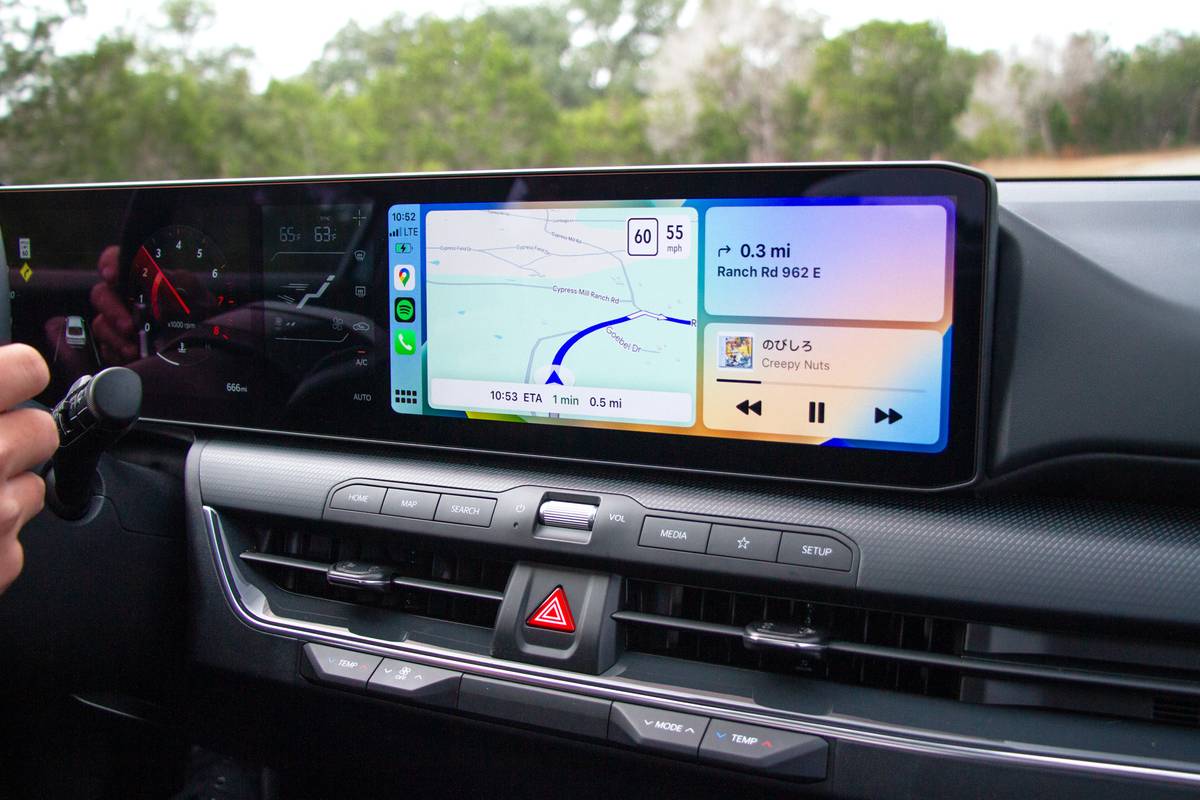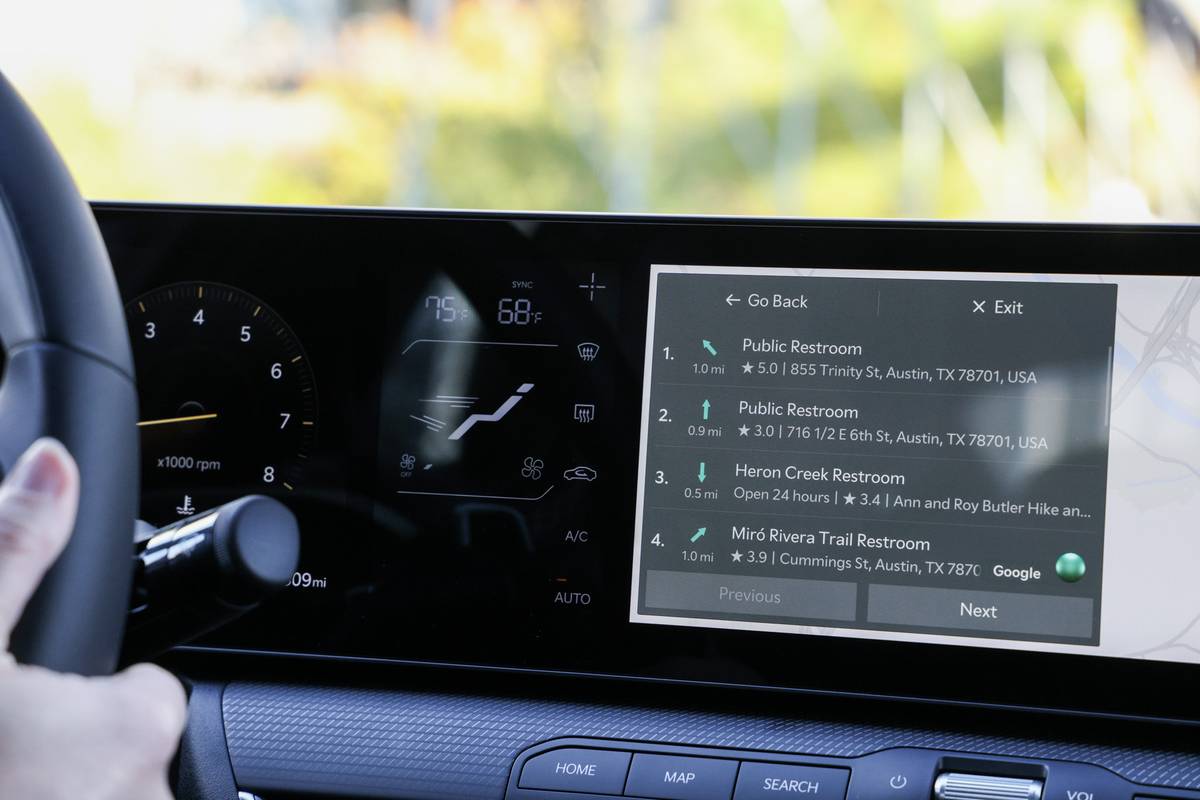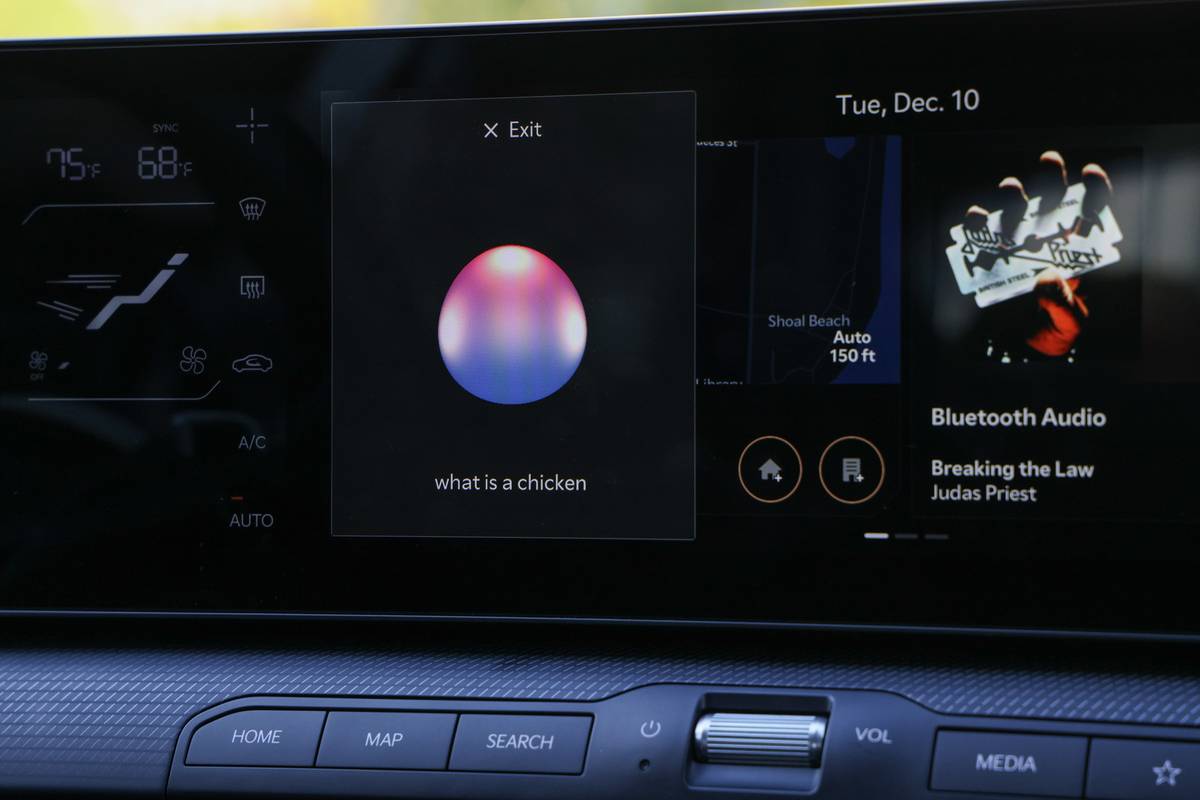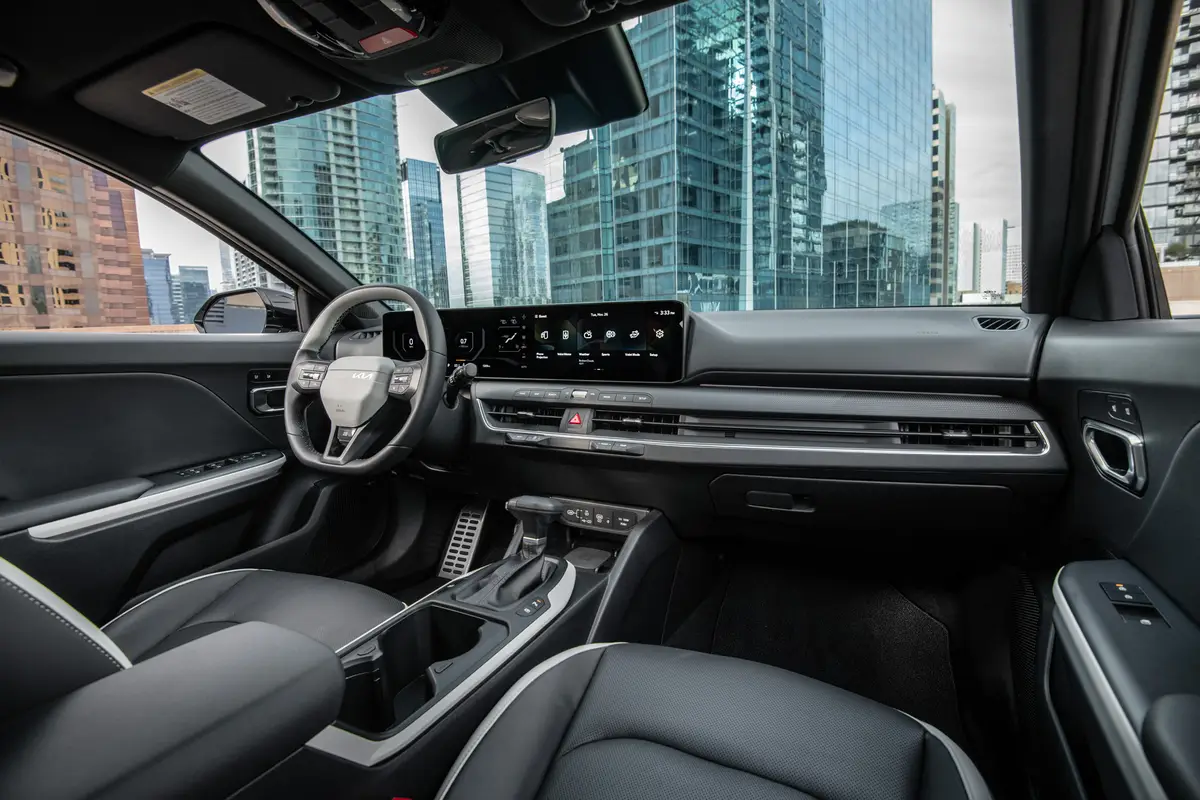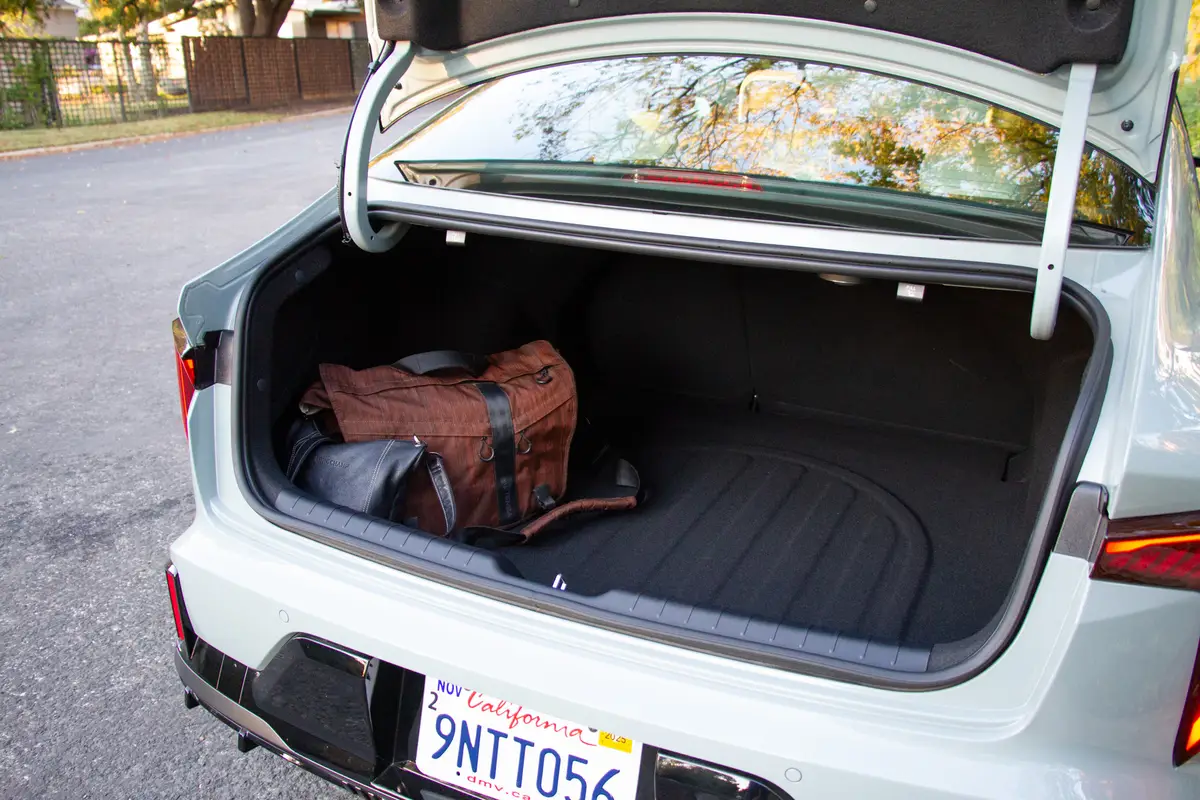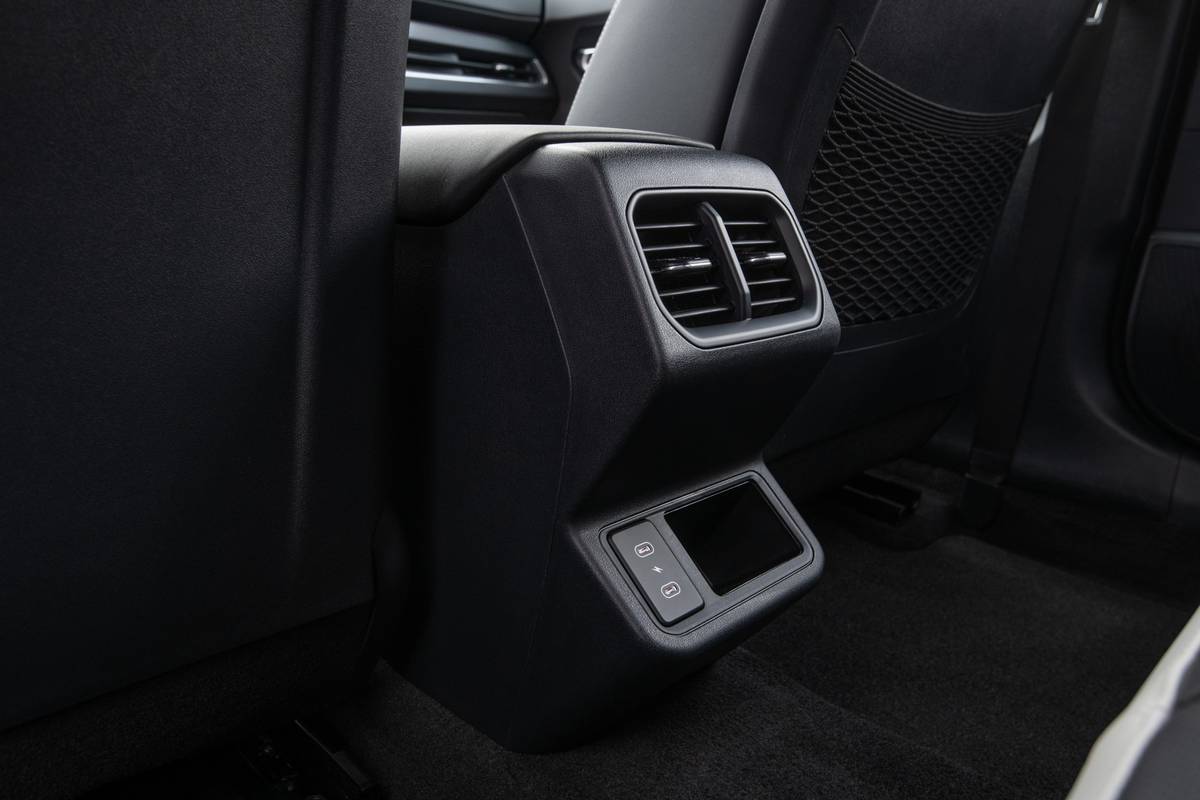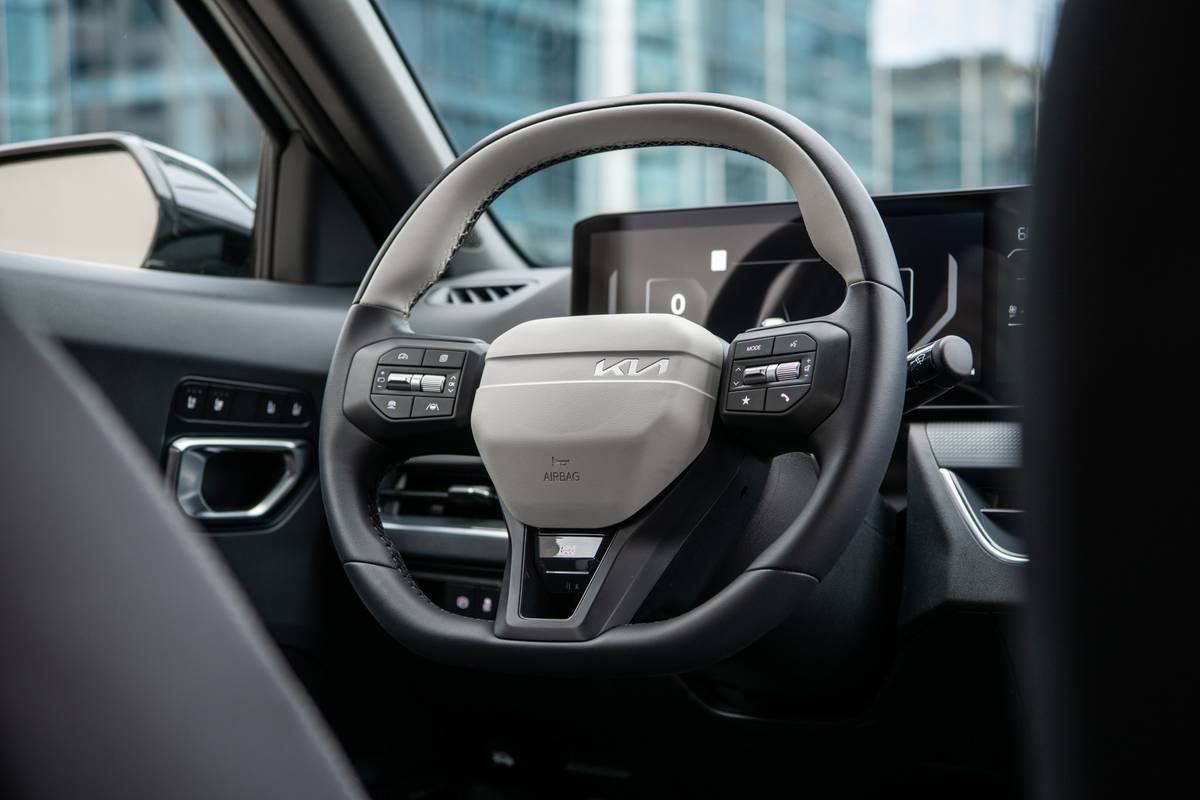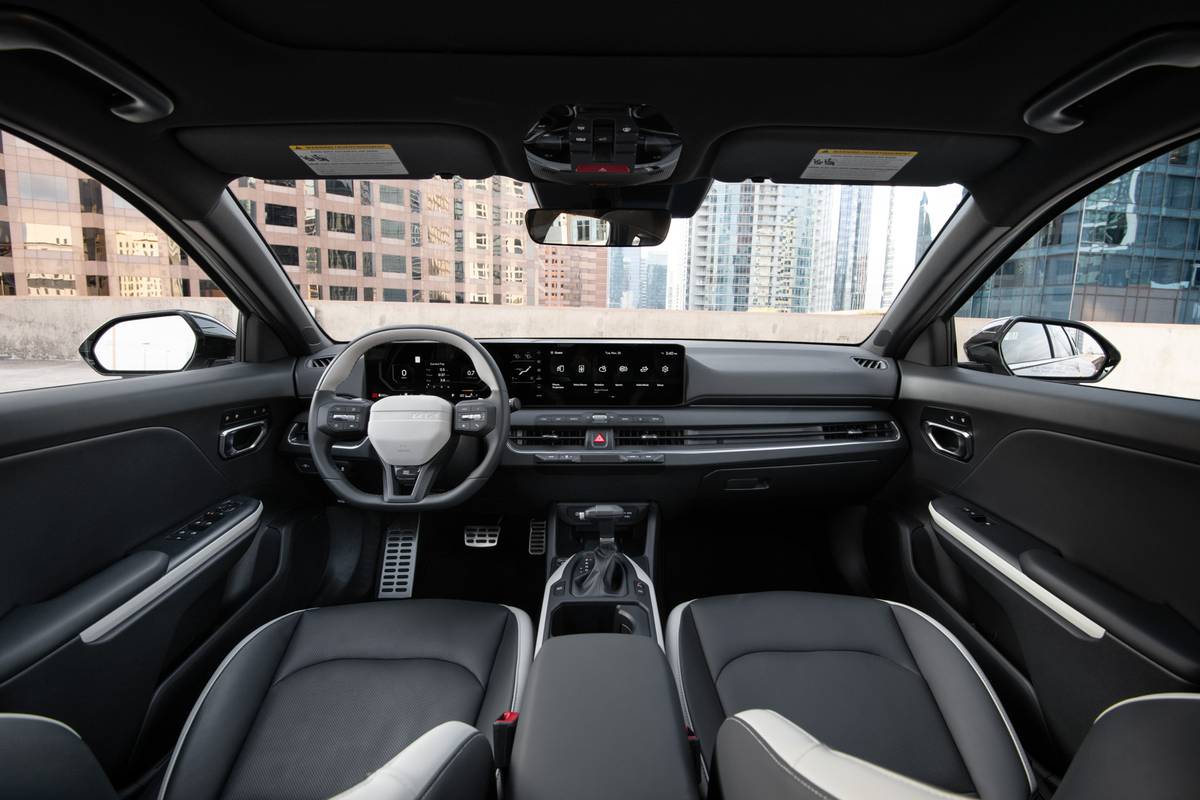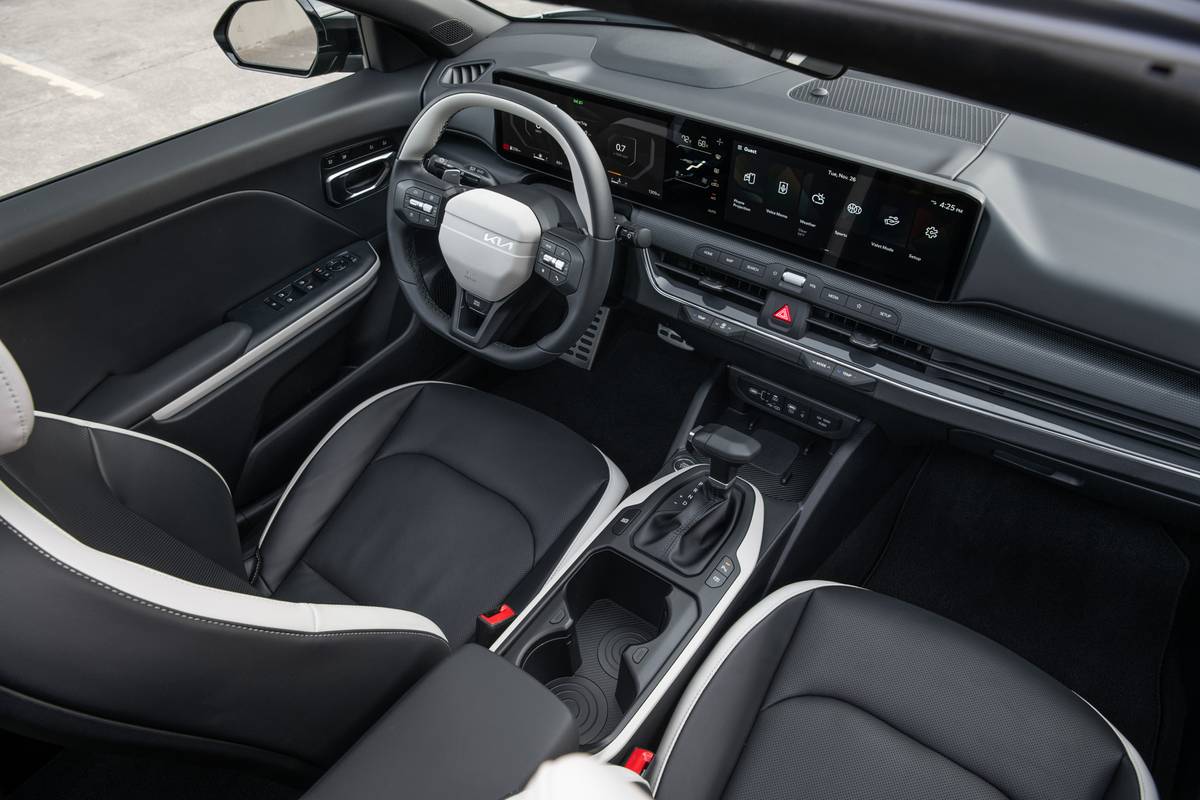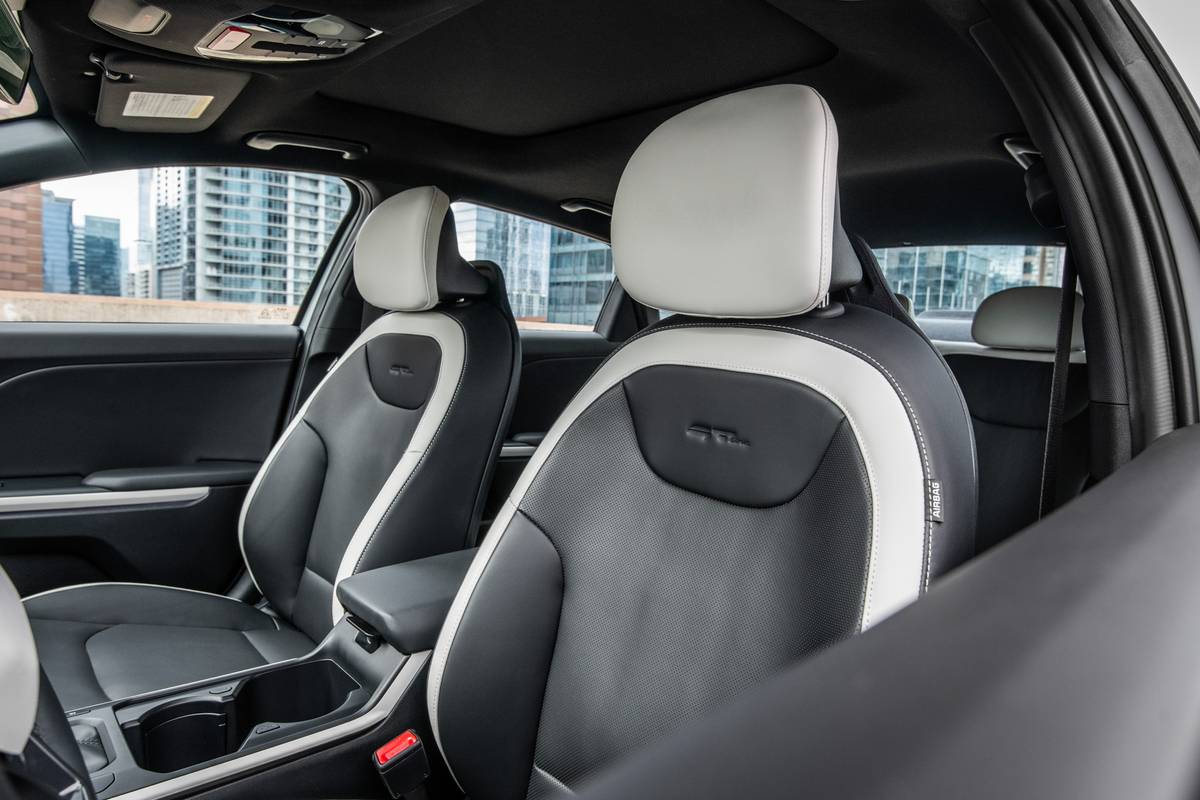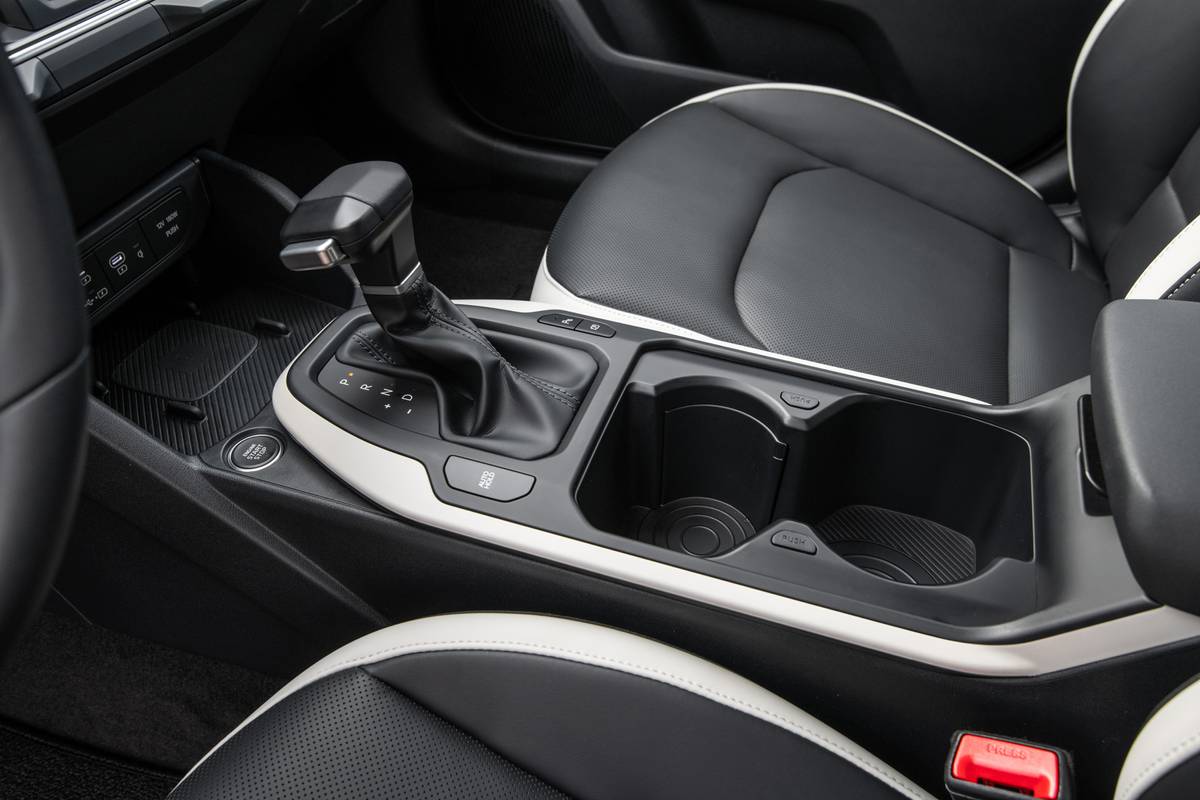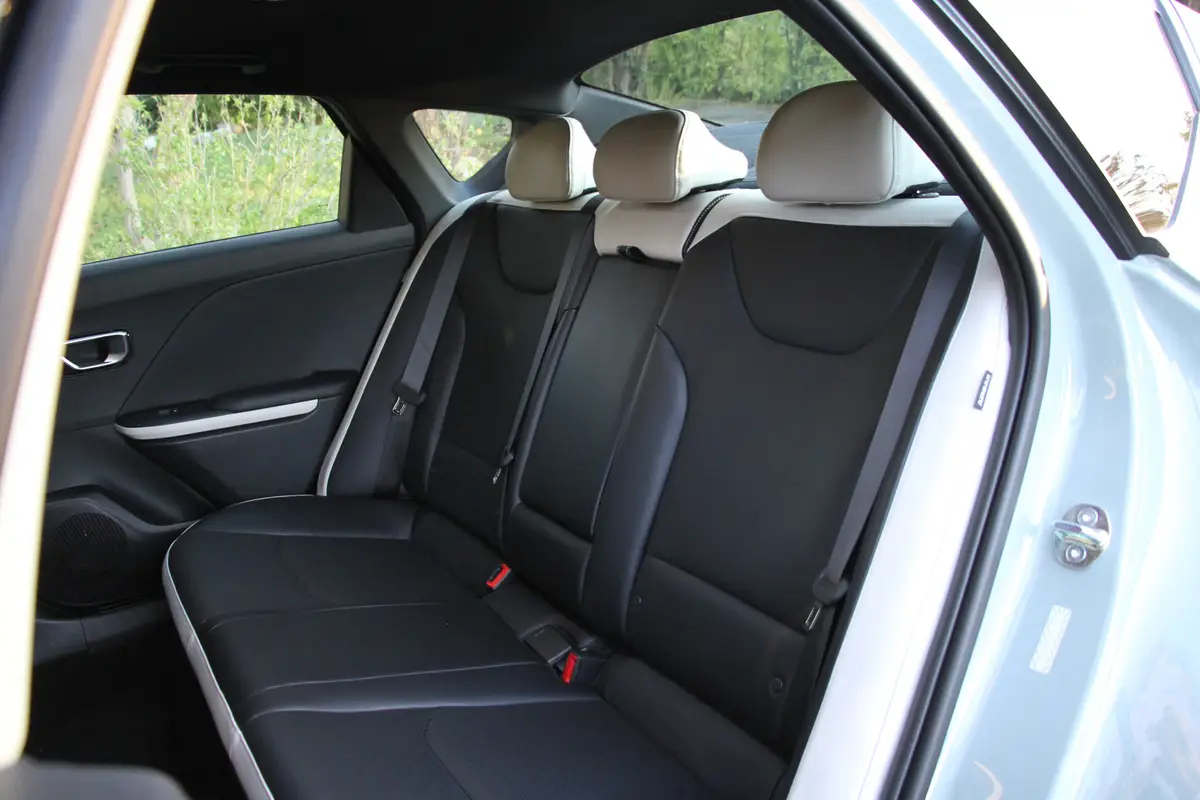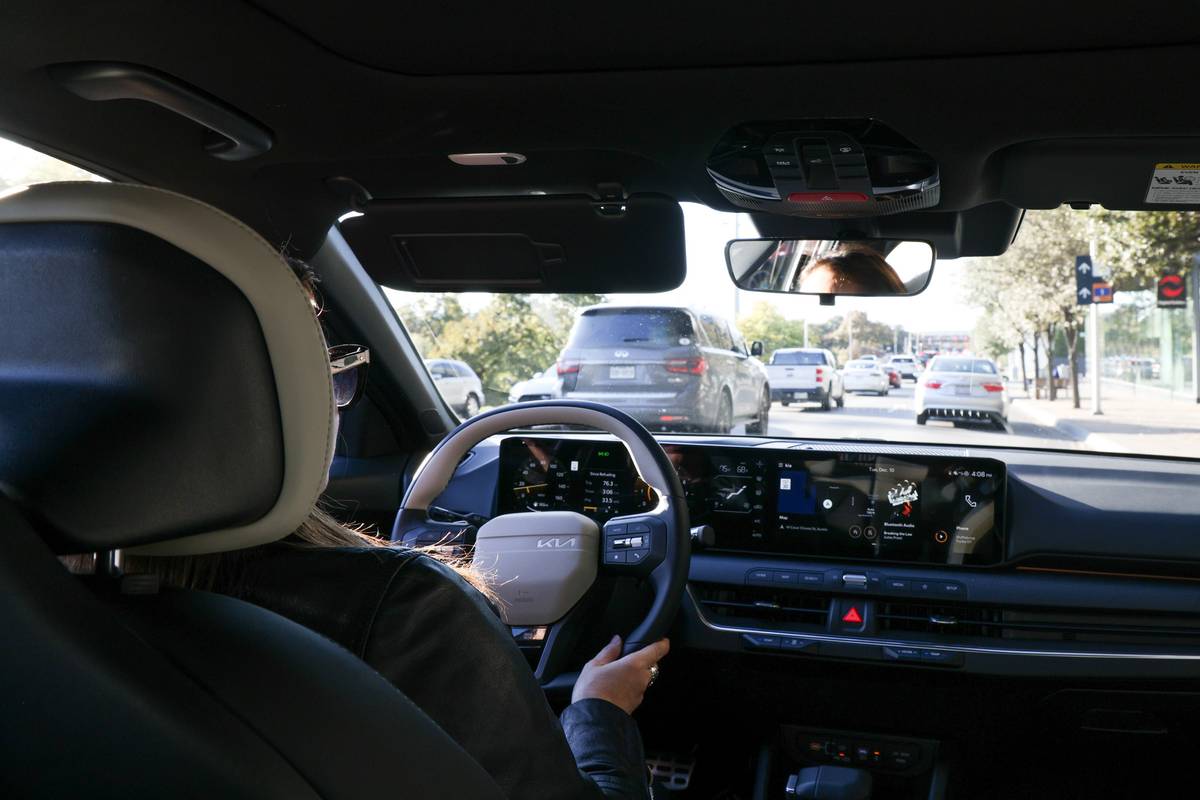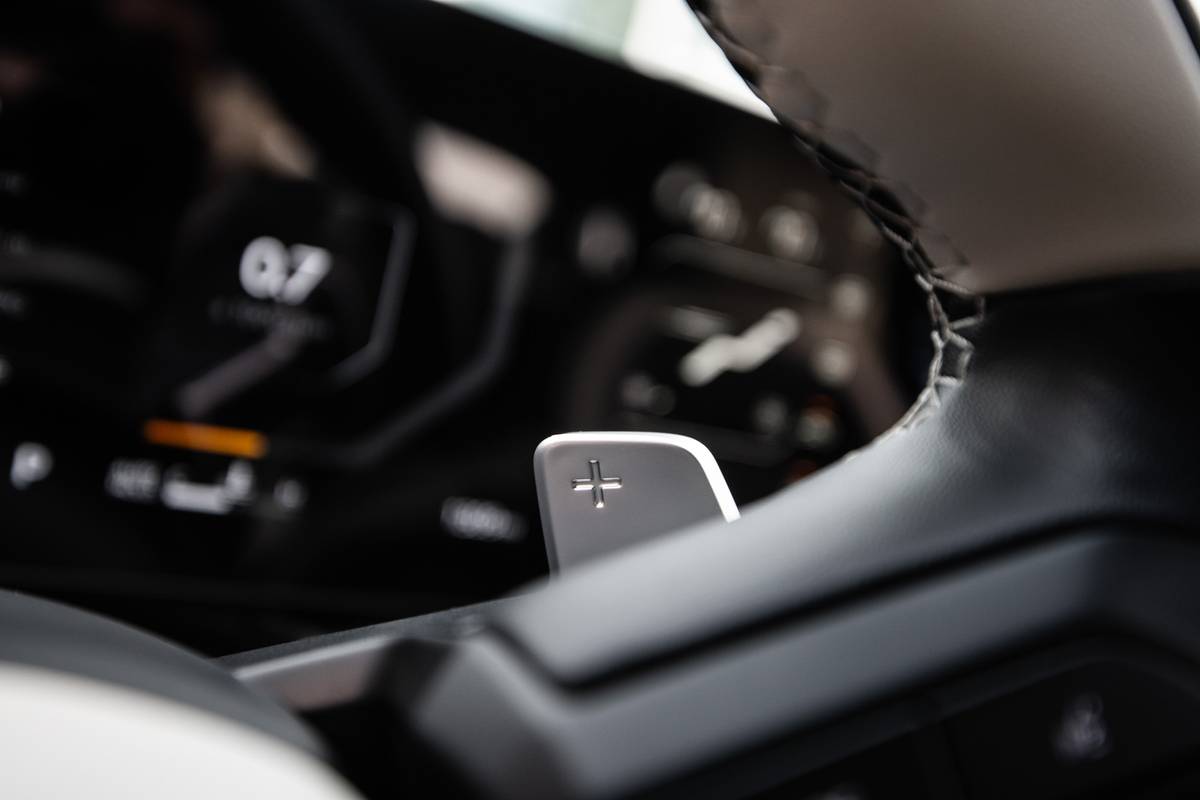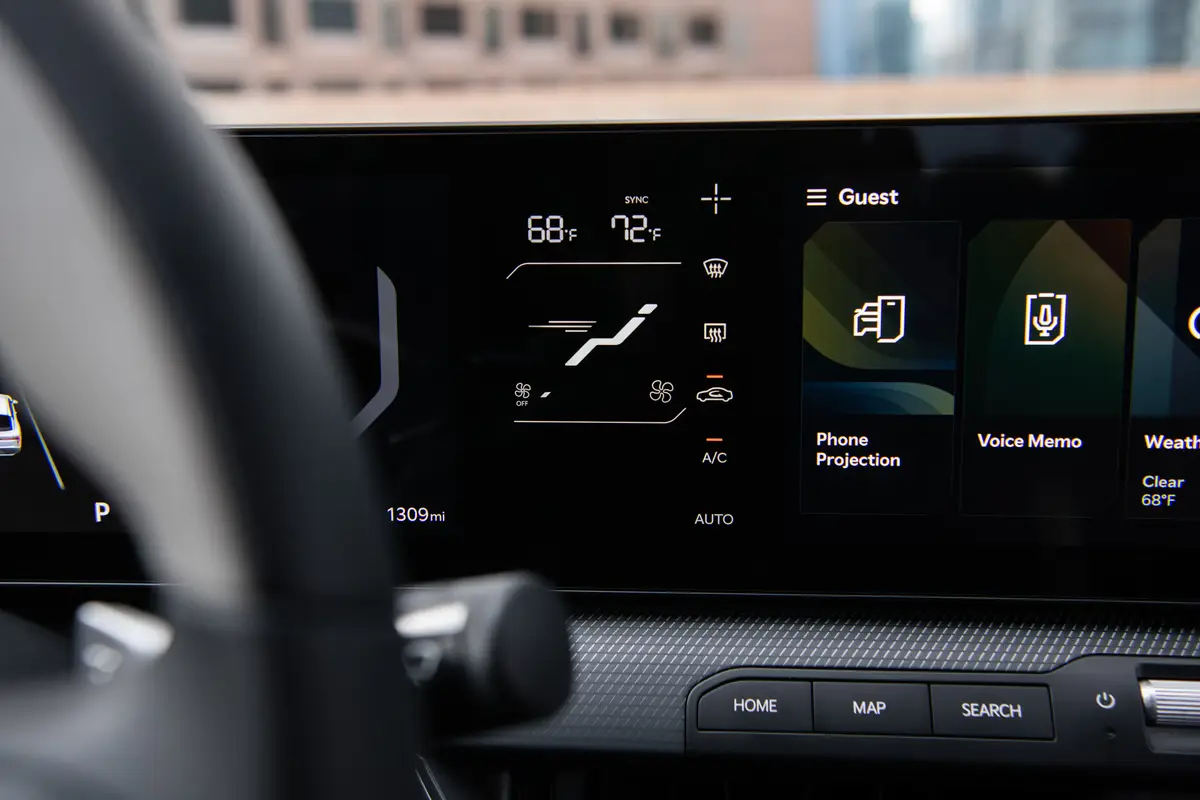
The verdict: The 2025 Kia K4 is more spacious, more stylish and more high-tech than the Forte it replaces, and the GT-Line trim is an especially compelling package, with great handling from its multilink suspension and extra features you might not expect in an affordable sedan.
Versus the competition: The Kia K4 improves on the Forte’s excellent value proposition, offering a ton of desirable features at one of the most affordable prices in its class. The GT-Line — especially with the more powerful turbocharged engine — is plenty of fun, but it doesn’t offer a manual transmission like some sport compact rivals.
The 2025 Kia K4 is one of the most distinctive compact sedans out there at the moment. Its fresh styling turns heads, and the GT-Line and GT-Line Turbo cars I sampled for this review truly hit a sweet spot when it comes to desirable options, affordability, comfort and fun. (Per Cars.com’s ethics policy, we pay for any travel and lodging at such manufacturer-sponsored events.)
As the Forte’s replacement, the K4 has big shoes to fill. Not only is it a compact sedan at a time when automakers keep dropping sedans from their lineup, but the Forte was our 2024 Best Value top pick among compact sedans. Fortunately, Kia only improved upon the formula that made the Forte a winner, as the K4 comes with an extensive list of standard features and offers options that are surprising to see in a car at the lower end of the compact sedan market.
Related: 2025 Kia K4 Up Close: Style and Substance
The Sport-Lite Compact Car
Most compact sedans have a trim with some extra performance kit that isn’t fully committed to the hardcore sport compact bit. Hyundai has its Elantra N-Line, Honda has the Civic Si, and Kia — in the same vein as Hyundai — has the K4 GT-Line.
The K4 GT-Line and GT-Line Turbo I tested included some key performance features like 18-inch alloy wheels and paddle shifters for the transmission, but the biggest upgrade is a multilink rear suspension. While I wish I would have been able to drive the base K4 (which has a rear torsion-beam suspension instead), the multilink setup on the GT-Line impressed me, soaking up bumps in the rough pavement while still being composed and predictable on twisty roads. It’s also nice to see on a trim that starts at just $26,345 (all prices include destination). Peers like the Mazda3 or Volkswagen Jetta have moved away from independent rear suspensions entirely or limited their use to more expensive trims.
The standard GT-Line comes with the same 2.0-liter four-cylinder engine and continuously variable automatic transmission as lower-spec K4s, and it’s a smooth combination that I’d daily-drive without complaints. Its 147 horsepower and 132 pounds-feet of torque had more than enough low-end oomph to get out of its own way, and the CVT quietly, competently and smoothly did its job in the background. While I’m generally not a fan of CVTs with preset simulated gear ratios, these were unobtrusive and barely perceptible, never jerking the car around or making any loud sounds. The extra effort Kia put into reducing noise on the K4 GT-Line trims — including dual-layer carpeting, acoustic windshield glass and even tires picked for their quiet ride — definitely paid off, as well.
The party piece of the K4 lineup is the GT-Line Turbo’s engine, a turbocharged 1.6-liter four-cylinder good for 190 hp and 195 pounds-feet of torque, which is mated to an eight-speed automatic transmission in place of the standard CVT. This trim bumps the base price to $29,245, making it one of the least expensive turbocharged performance trims in its class.
The 190 hp provided enough power to break the tires loose for, ahem, totally serious testing purposes, and combined with the competent multilink suspension to make this K4 pretty fun to toss around on back roads. Weight shifts from one side to the other in turns in a predictable manner without the floatiness you might expect from a car this good at soaking up bumps. The eight-speed automatic transmission’s shifts were smooth and inoffensive, though the engine noise when you really mash the go-pedal was a tad louder than the base engine.
Both GT-Lines had a Sport mode to increase the throttle response and firm up the steering feel, which made even the base engine and transmission pretty fun through tight corners. The K4’s steering feel was excellent even outside of Sport mode, though, and did a great job of conveying what was going on with the road surface below. Should you also want to row your own real or simulated gears, the paddle shifters are plenty fun to play with, as well, as these barely hesitated to complete a shift in my time tinkering with them.
The lone downside to the GT-Line being so good is that we’re left wanting a more potent GT trim similar to what Kia had with the Forte GT. (Maybe one with three pedals, too, pretty please?)
Find Me a Cheese Shop, Robot Overlords
Perhaps the most impressive thing about the new K4 is the amount of technology it offers for the price. The K4 offers a long list of safety features and driver assists, and I found these to be useful without being too distracting. The regular Highway Driving Assist lane-centering adaptive cruise control (standard on the GT-Lines) does a fantastic job of driving smoothly without any ping-ponging back and forth between the lines.
I also tested the more advanced, optional Highway Driving Assist 2 semi-autonomous driving system, which works as long as you keep your hands on the wheel. This system adjusted to the changing speed of traffic ahead while maintaining a good distance from the car in front of us and eased through turns with smooth, natural-feeling inputs. Nudging the wheel didn’t turn the system off, either.
All K4s come standard with a 12.3-inch touchscreen display that has wireless Apple CarPlay and Android Auto and the ability to accept over-the-air system updates. But the most surprising tech feature to see in an entry-level sedan like this was its Google AI-enabled voice assistant. Not only did it actually understand my voice more often than not — a frustrating rarity for women like me — it was also able to bring up additional information (such as reviews or hours of operation) on points of interest, play word games like “I Spy” and “20 Questions,” and chat back and forth conversationally.
I found this feature was most useful for general queries, like where to buy a cactus or which Indian restaurants were still open near me, as it still comes with all the shortcomings of a large language model chatbot and will confidently tell you the wrong information if given the chance. I tried stumping it by asking about specific local Austin, Texas, locations and got some doozies back as answers: incorrectly calling The Bullock Texas State History Museum “the Doughnut, or the Flan Building” when I asked for the location of the old flan-shaped Frank Erwin Center; a wild answer about a Giant Austin Orb that doesn’t exist when I asked where I could find the round tree house in town; and a claim that we have a “popular Troll Bridge in Castle Hill” when I asked about a recently installed troll sculpture (I think it was referring to the Troll Bridge in Portland, Ore.).
As with any connected system, we’d like to urge caution as to what you share with your new friend, the K4-bot, even though a Kia representative at the drive event said that user data aren’t shared beyond the car or Kia’s systems. Still, pulling up detailed information about destinations right there in the car’s navigation system is a useful application for this type of chatbot tech.
The K4’s system’s main limitation was the quality of its data connection. If it needed to prompt Google’s systems for navigation routing or a chatbot reply and your connection was slow, your answer would be slow, too. Other than that, the system had little lag time.
A Comfortable Compact
Inside the K4 GT-Line, you’ll find soft but supportive and well-bolstered front seats and a minimalist dashboard covered in soft-touch plastics. Both cars I tested were equipped with heated and ventilated front seats that heated up and cooled back down quickly. The 10-way power-adjustable driver’s seat that comes standard in the GT-Line works well for the most part, though the adjustable lumbar support sits rather low for me and it lacked the ability to move that support vertically.
Rear passengers may have it a little tougher, as even I ran into the swooping rear roofline getting in and out of the back seats, and I’m 5-foot-4. Adjusting the front seat all the way back left me with just enough room in the rear seat for my legs to sit straight down. Worse yet, the entire front seatback is plastic that seems like it may be somewhat easy to scratch.
Inside is where my most glaring beef with the car sits, too. Most of the controls are intuitive and easy to use, with the touchscreen easy to see in my peripheral vision. Combined with logically arranged buttons on the steering wheel, nearly every major function in the car is easy to adjust while driving. However, while there are paddles underneath the touchscreen for fan speed and temperature, the display showing climate controls is obscured by the steering wheel. “Sync” is a tiny touch-sensitive button on this panel, so here’s hoping you’re at a better angle to see it than I was. This control panel sits far enough away from the passenger to be inconvenient for them while also being extremely distracting for the driver to use while the car is in motion.
The fastback-like roofline has other drawbacks, as well, as it reduces visibility out of the rear of the car and makes the opening for the trunk relatively small despite its Kia-claimed 14.6-cubic-foot capacity. Fortunately, the camera system in the K4 is quite good to help make up for this, especially if you spring for the optional 360-degree Surround View Monitor that can add a projection of your car onto the screen when you’re in a tight spot. The K4’s optional Park Distance Warning sensors also come in handy for fitting into tight spots, and like other safety features I tested, these were effective without being too startling.
More From Cars.com:
- 2025 Kia K4: New Name, Starts at $23,145
- 2025 Kia K4 Makes Style and Safety Its Forte
- Lights Up, Jaws Down: First Look at the Upcoming Kia K4
- 2024 Cars.com Affordability Report: Best Value New Cars
- Find Your Next Car
An Upgrade That’s Worth Its Price
The new K4 starts at around $2,000 more than the outgoing Forte at $23,145, but considering the Forte spec that got our Best Value pick for 2024 was $22,145, I’d still consider the K4 a great value. The Hyundai Elantra and Nissan Sentra have slightly lower starting prices, but they’re also not brand-new cars for 2025. The K4 is a big upgrade over the old Forte both in design and in function, and to say this makes me excited about the upcoming release of a hatchback K4 (which may also solve the sedan’s rear visibility and headroom problems) is an understatement.
The extra premium paid for the two loaded-up cars I tested — $28,345 for a GT-Line with the Premium Package and $31,445 for a GT-Line Turbo with the Technology Package — is in line with similar competitors, too. The K4 GT-Line’s one real disadvantage is its lack of a performance-oriented transmission. The Honda Civic Si is manual-only at a similar price point, and the Elantra N-Line offers a seven-speed dual-clutch automatic. Again, the K4 GT-Line’s automatic is smooth and great for what it is, but it probably won’t be enough to satiate the manuals-only set.
It’s hard to beat the K4 when it comes to available technology and styling, though. It’s definitely worth a look if you want a reasonably sized compact sedan that’s a lot of car for the money.
Related Video:
We cannot generate a video preview.
Cars.com’s Editorial department is your source for automotive news and reviews. In line with Cars.com’s long-standing ethics policy, editors and reviewers don’t accept gifts or free trips from automakers. The Editorial department is independent of Cars.com’s advertising, sales and sponsored content departments.






























